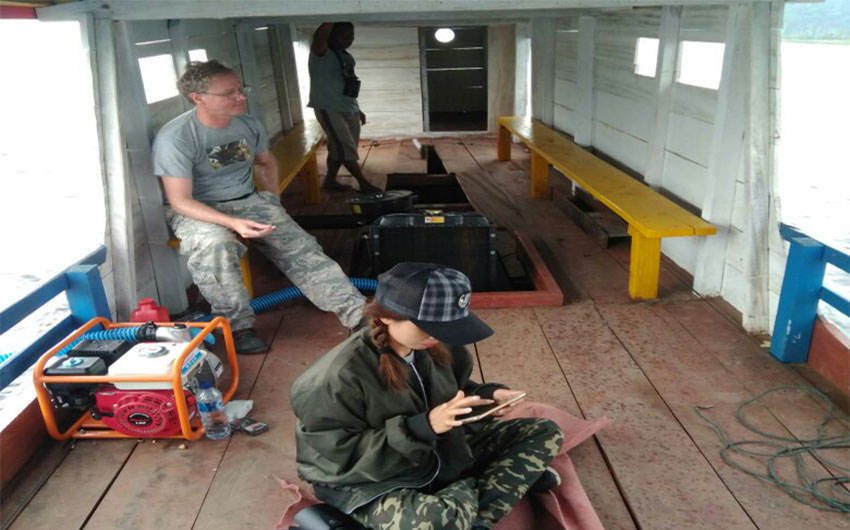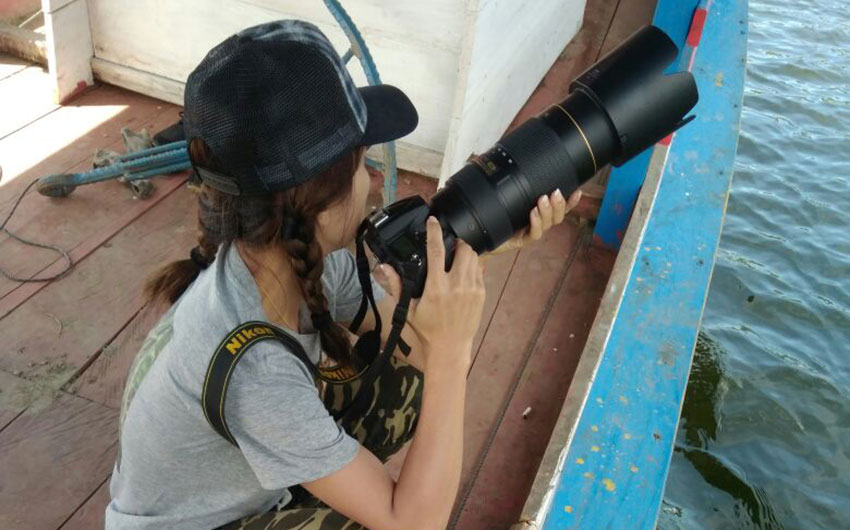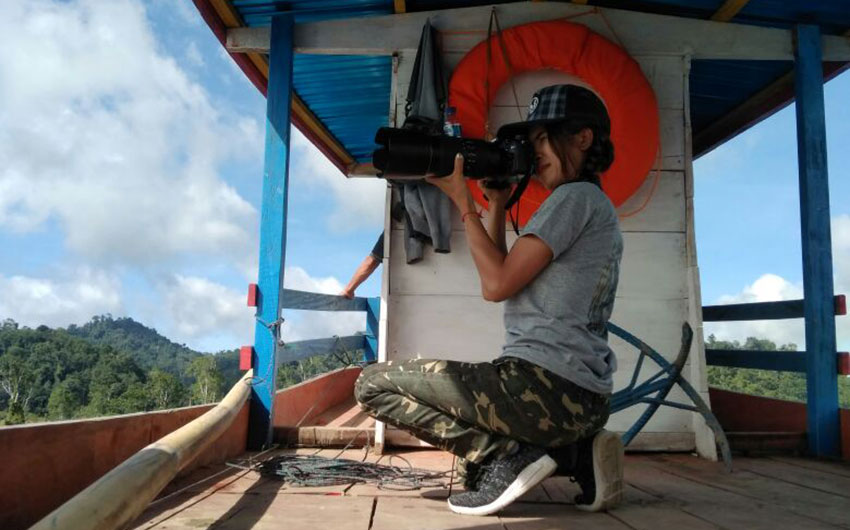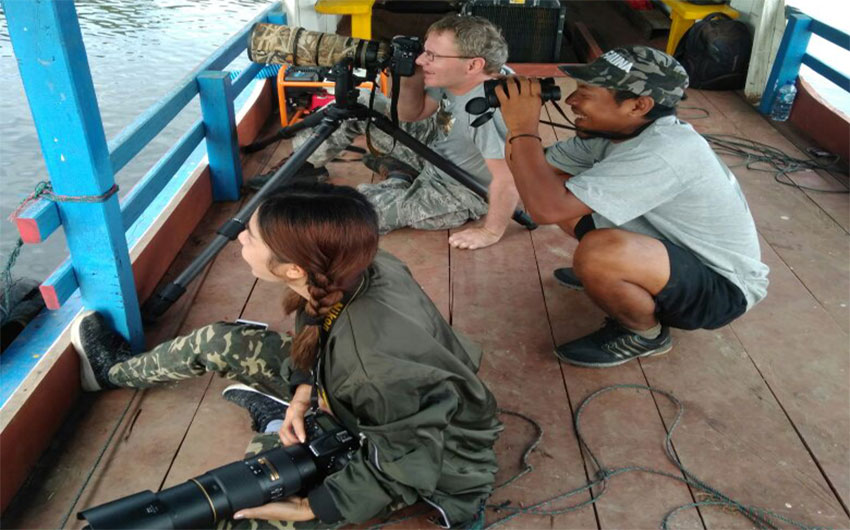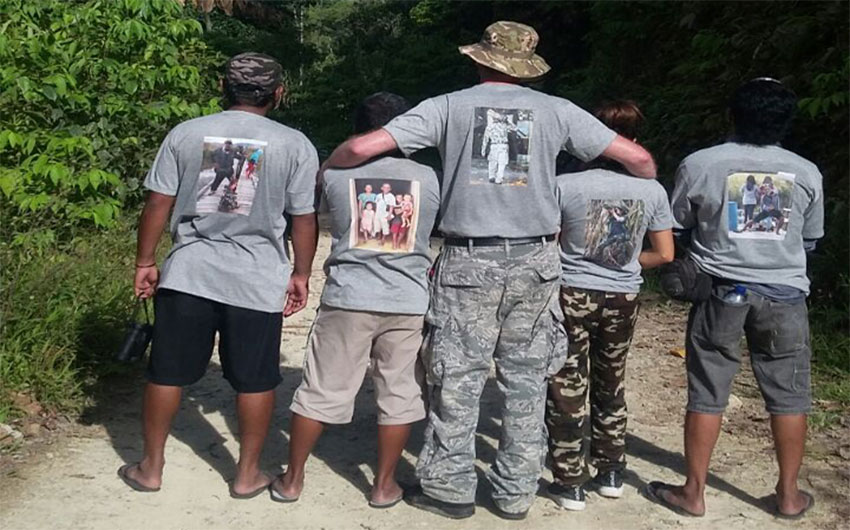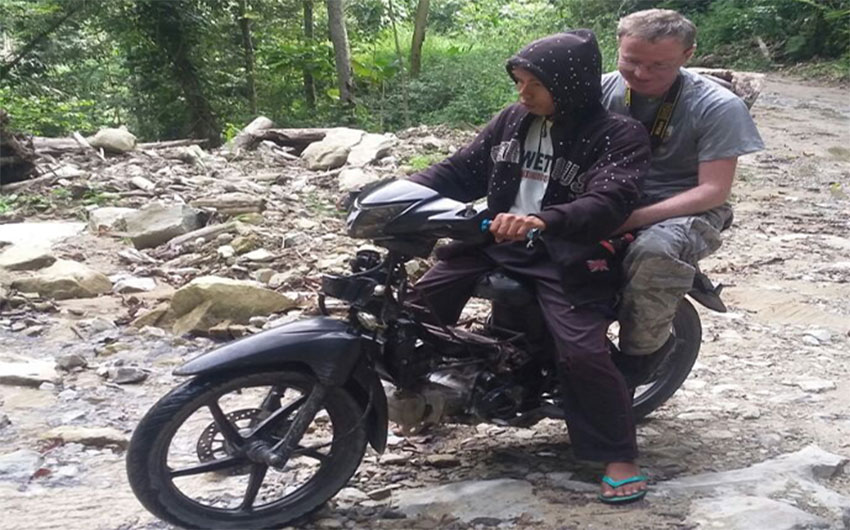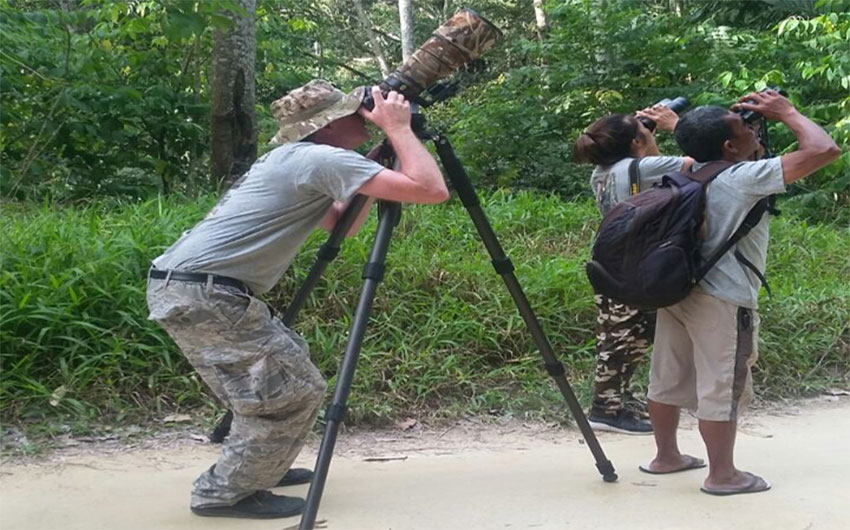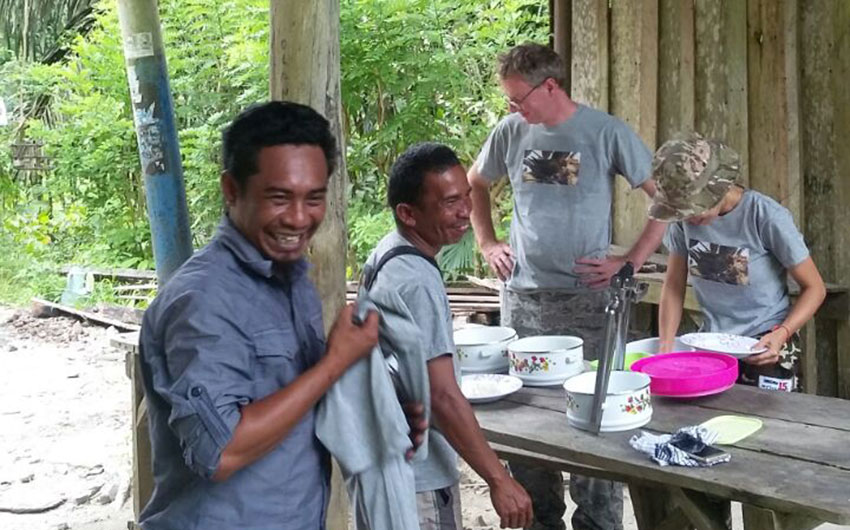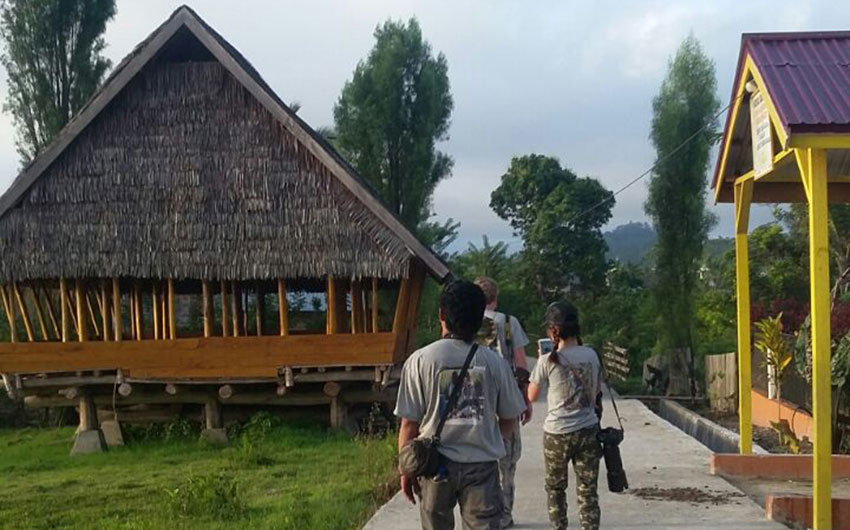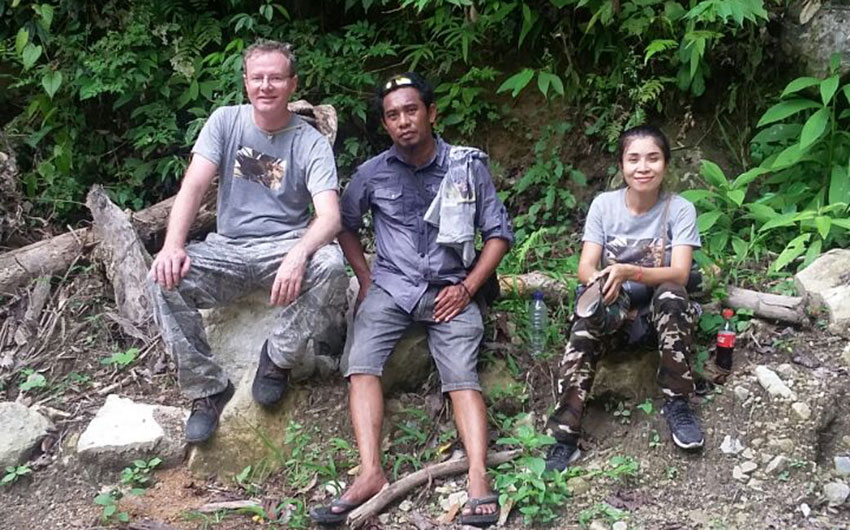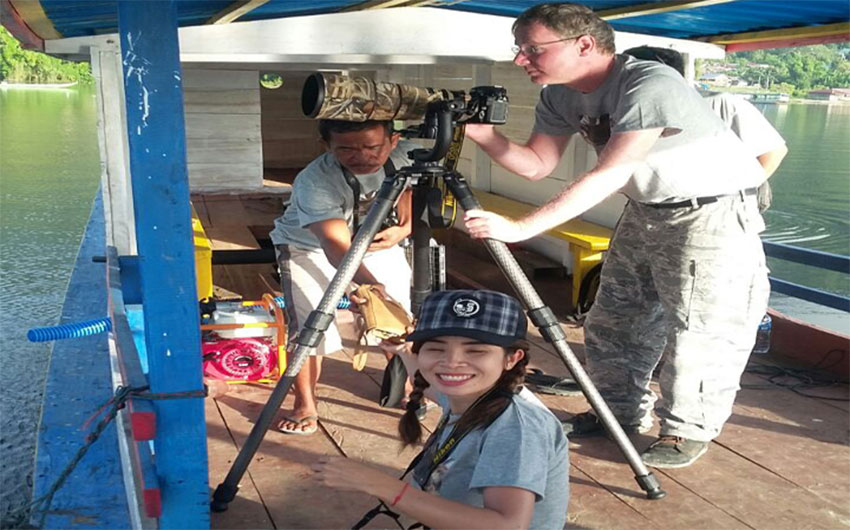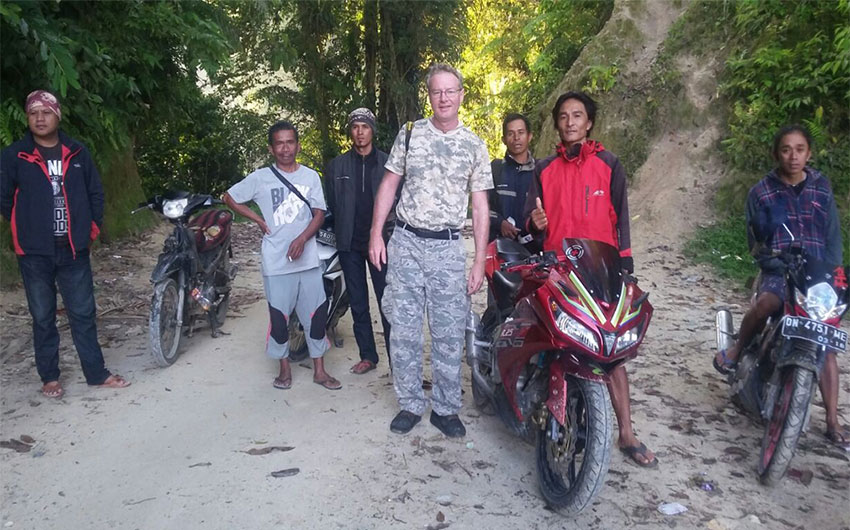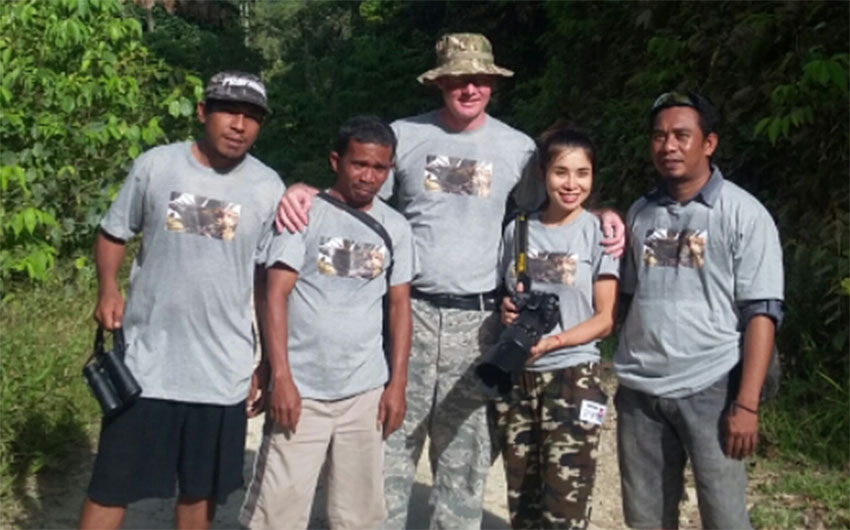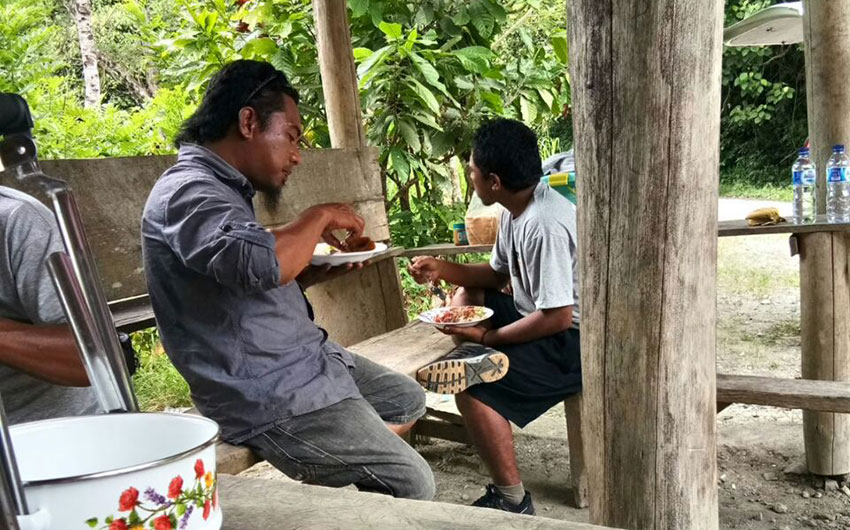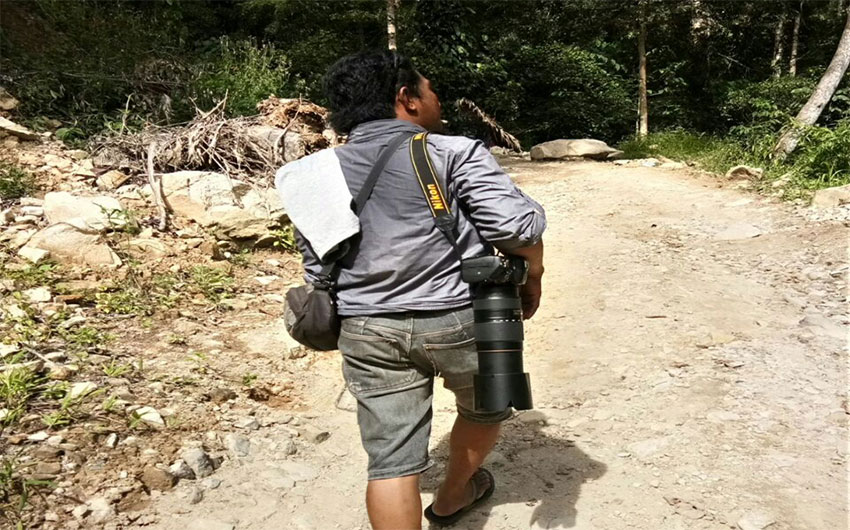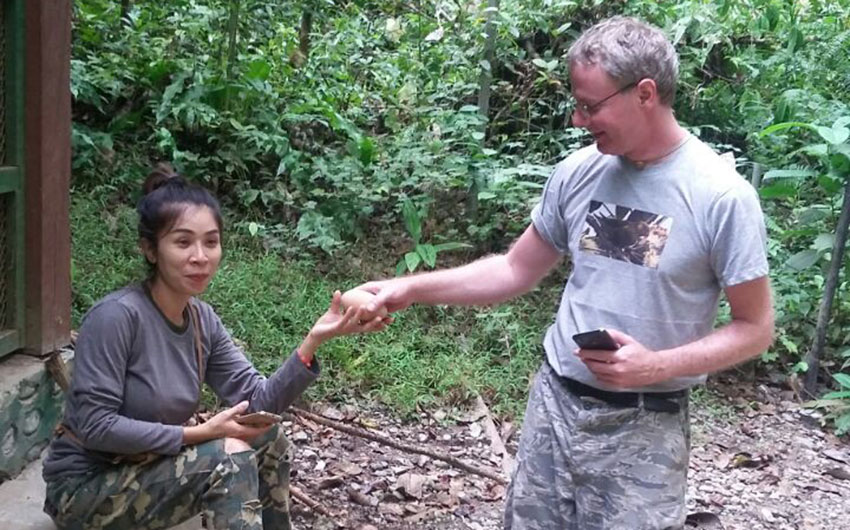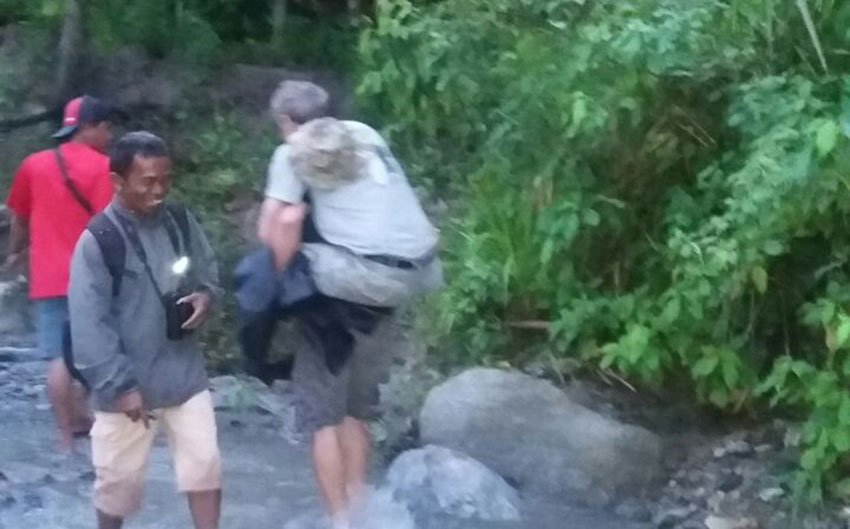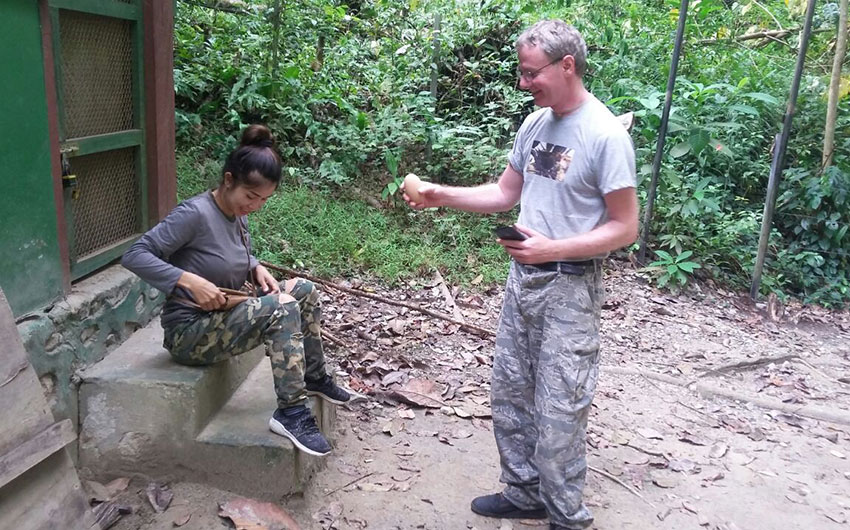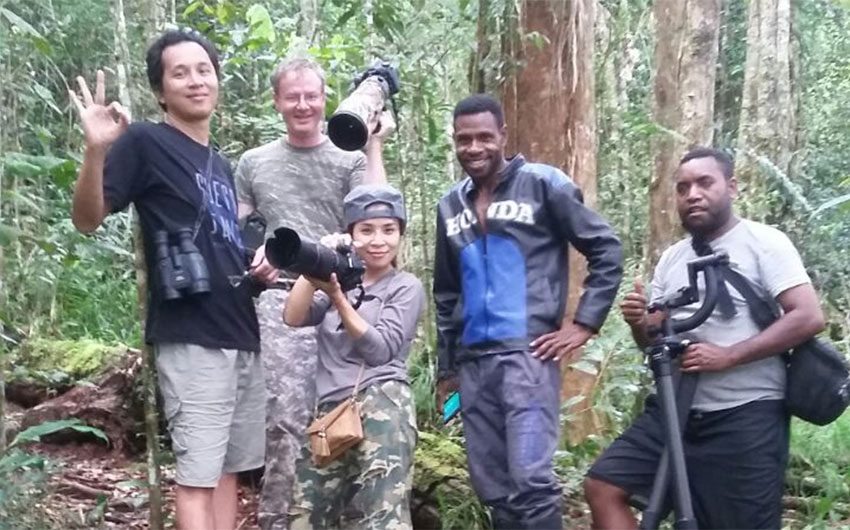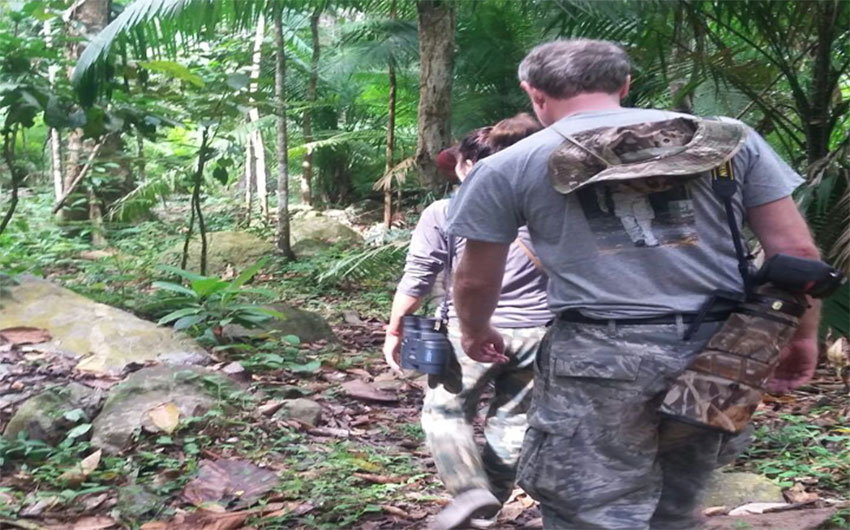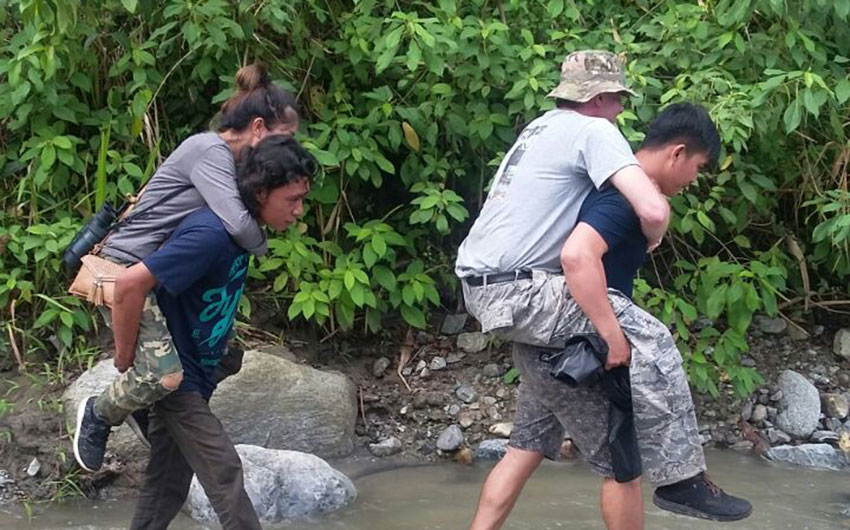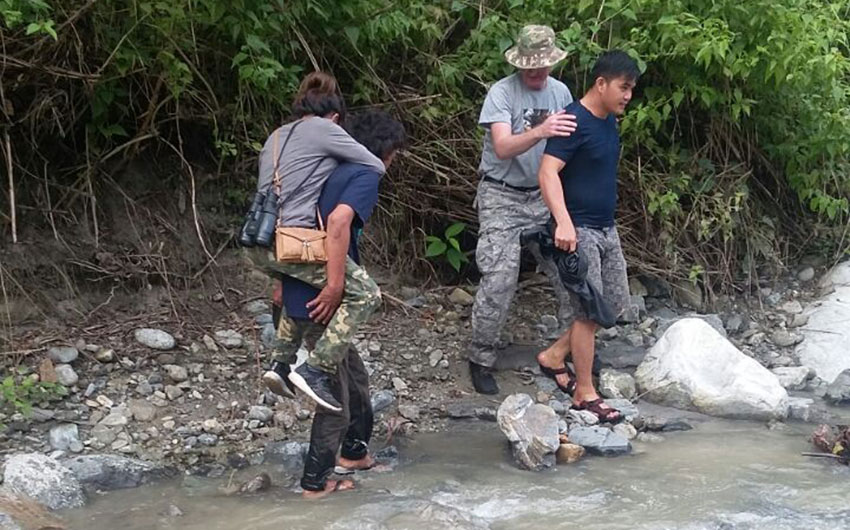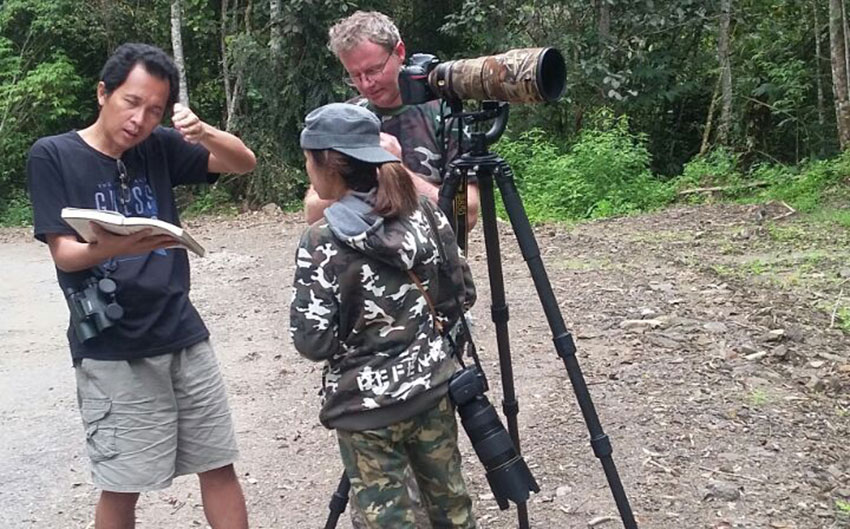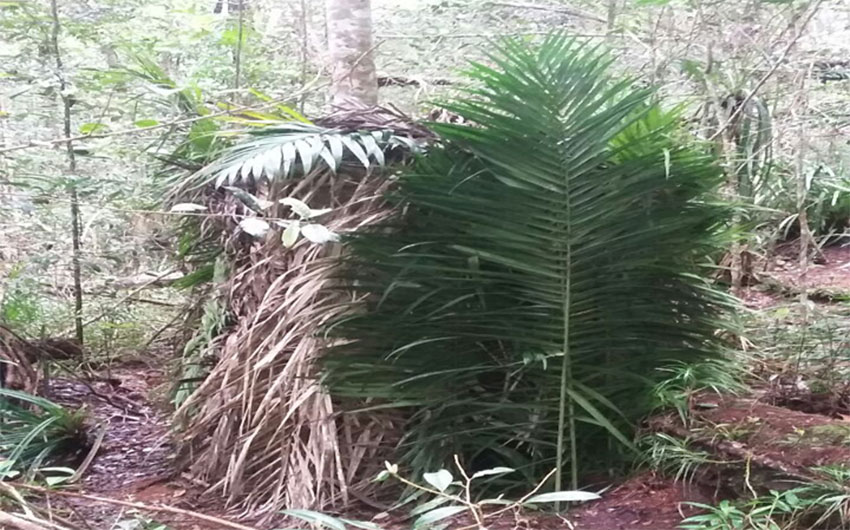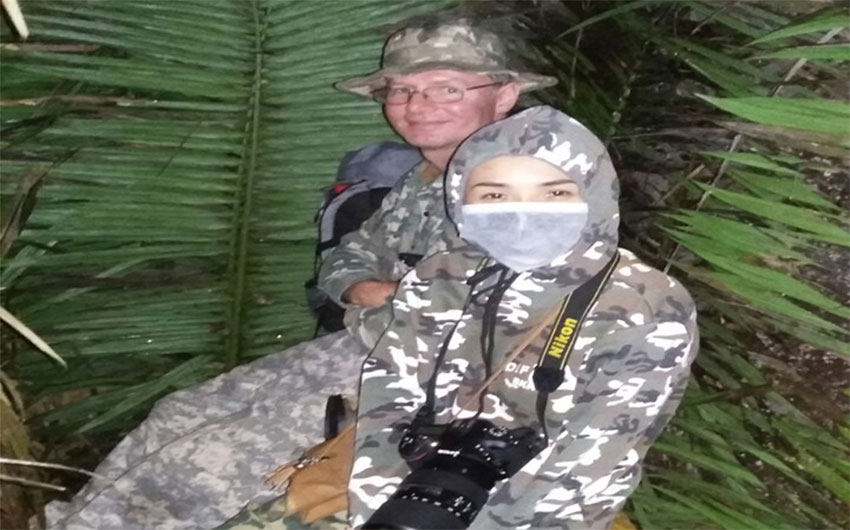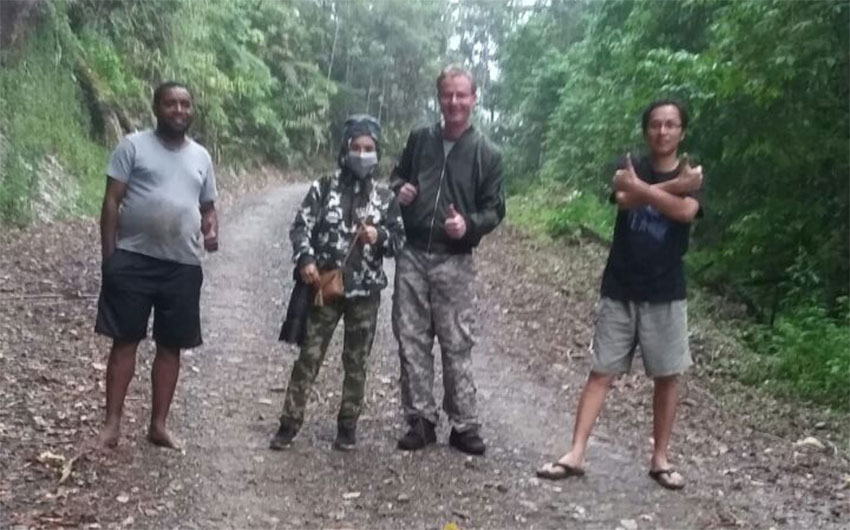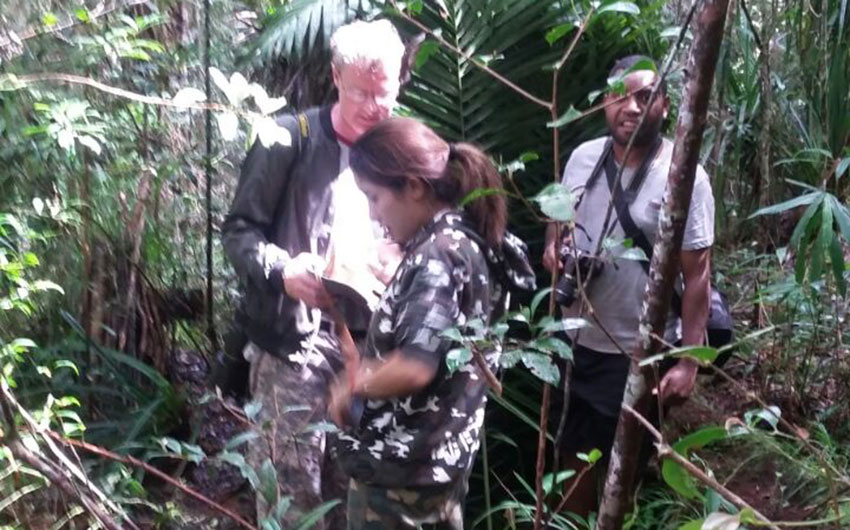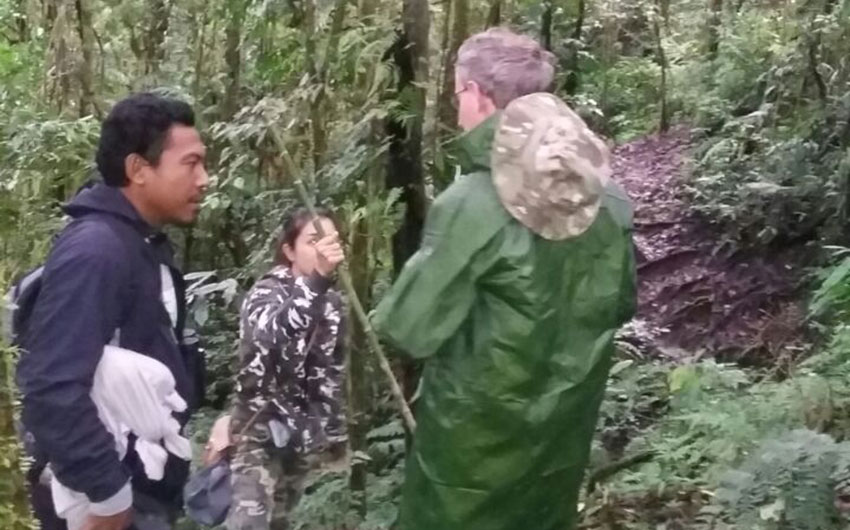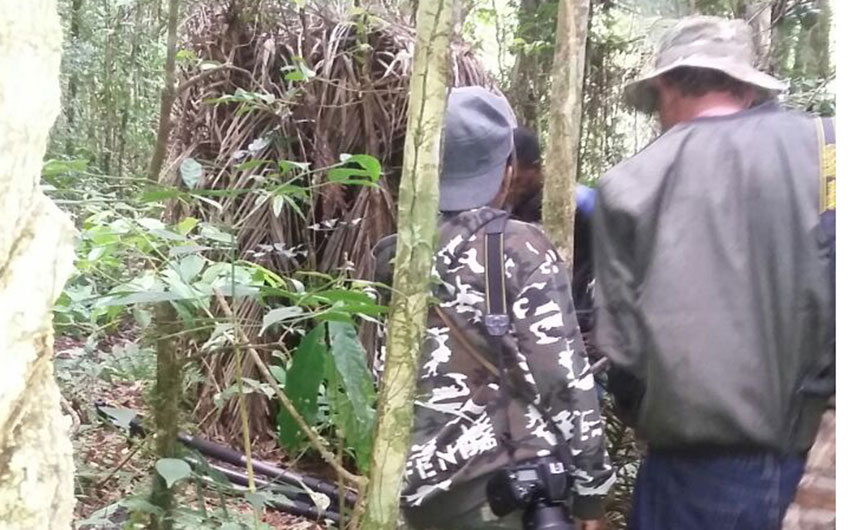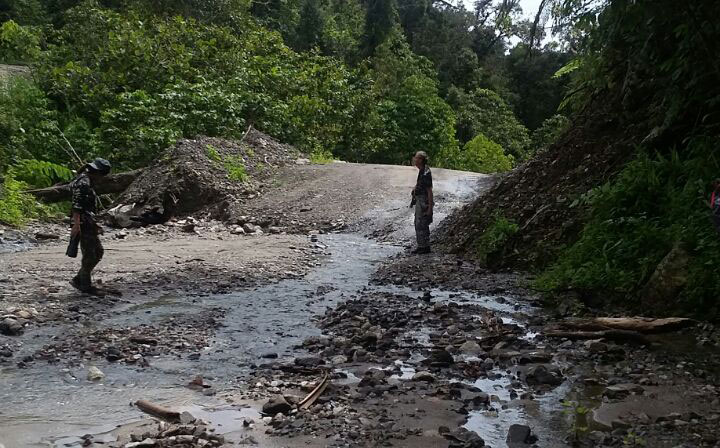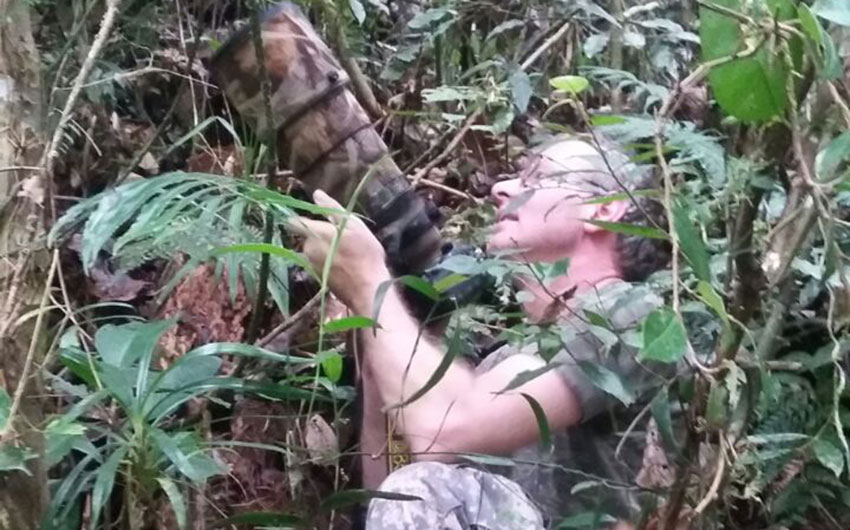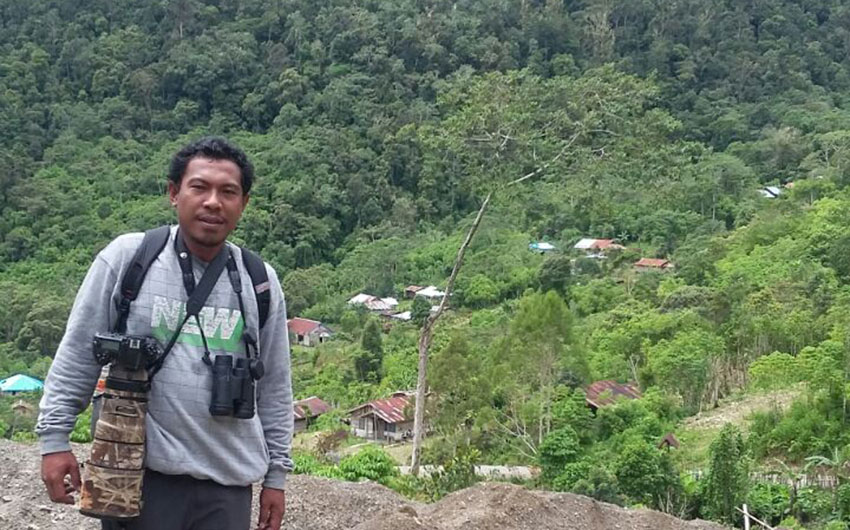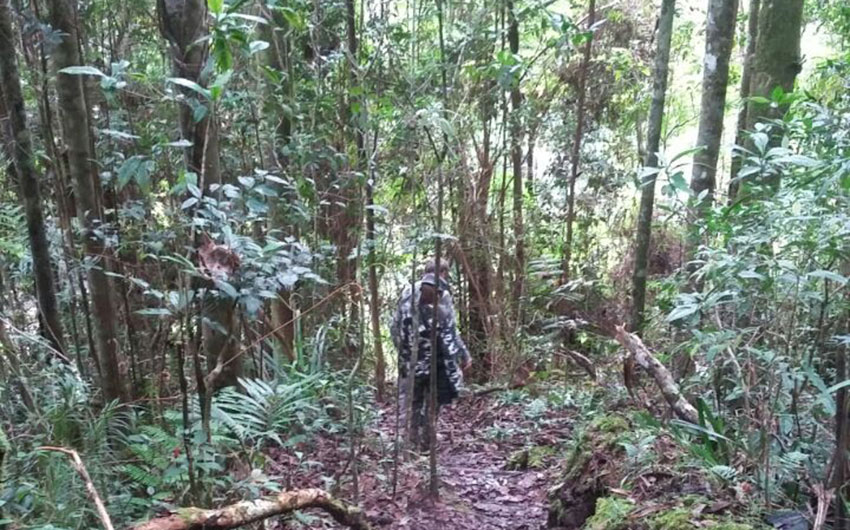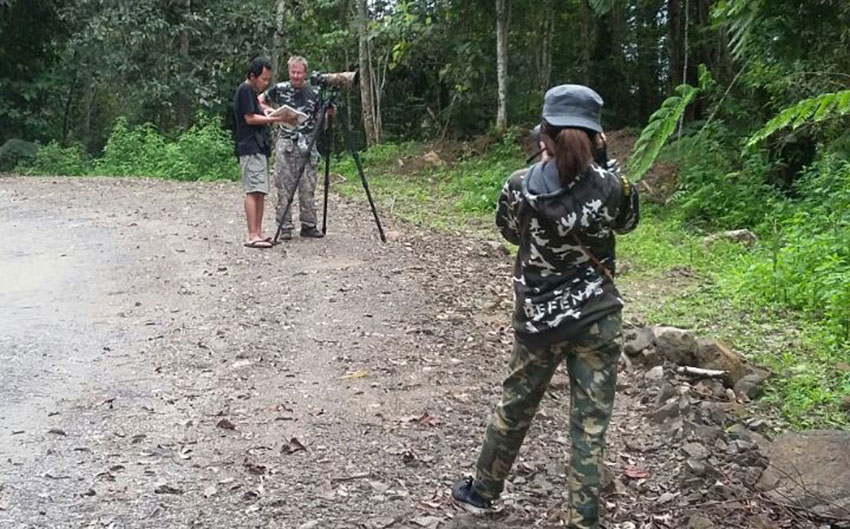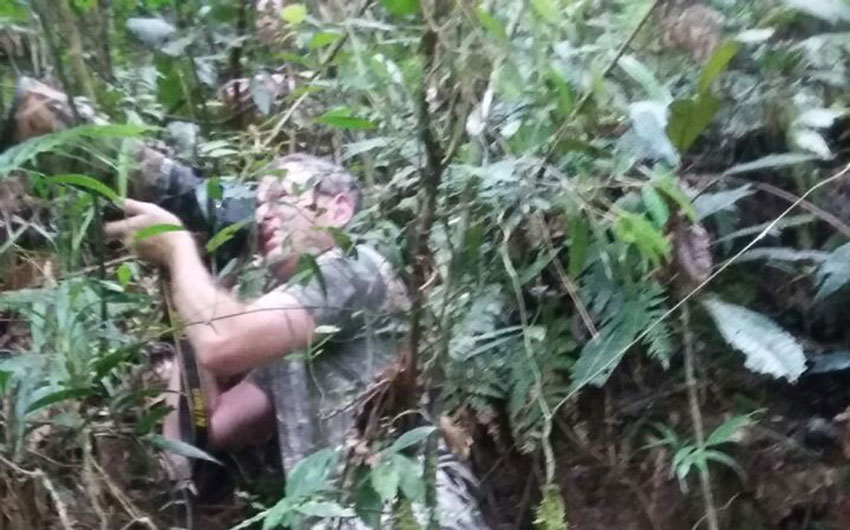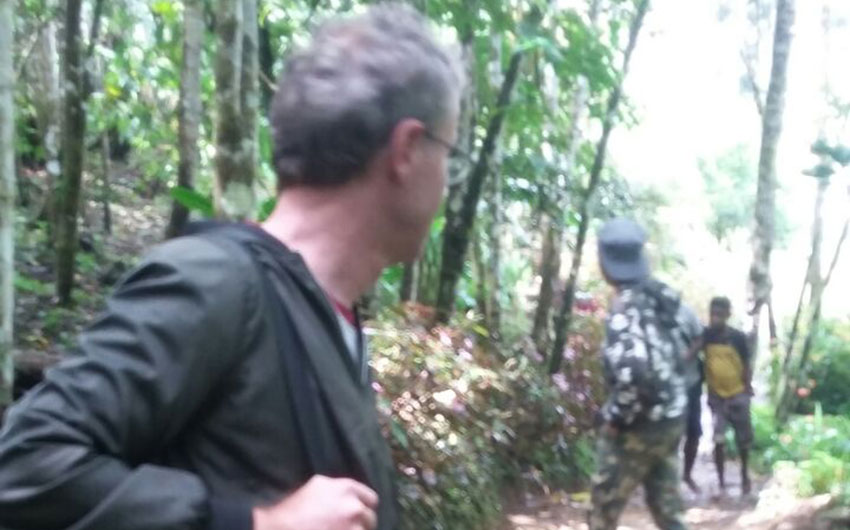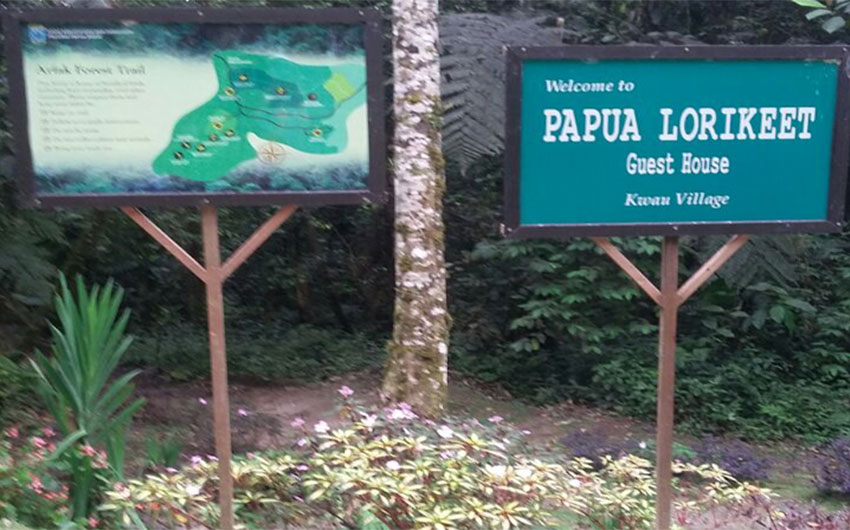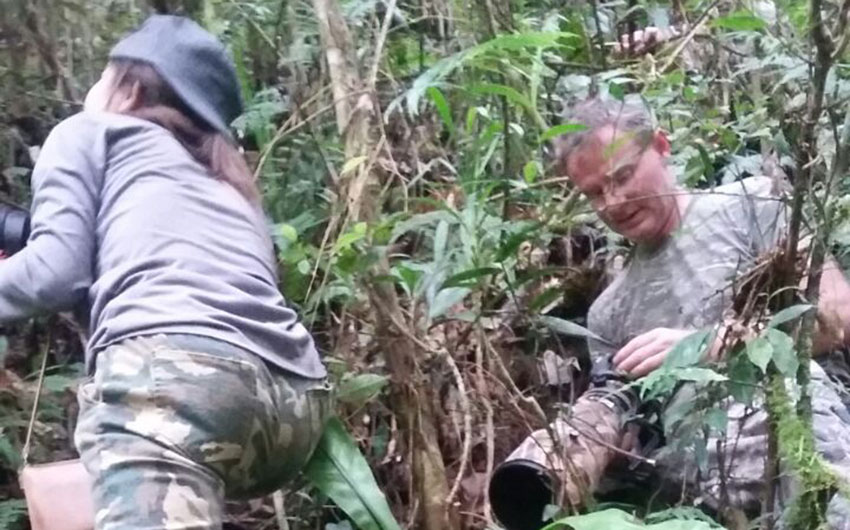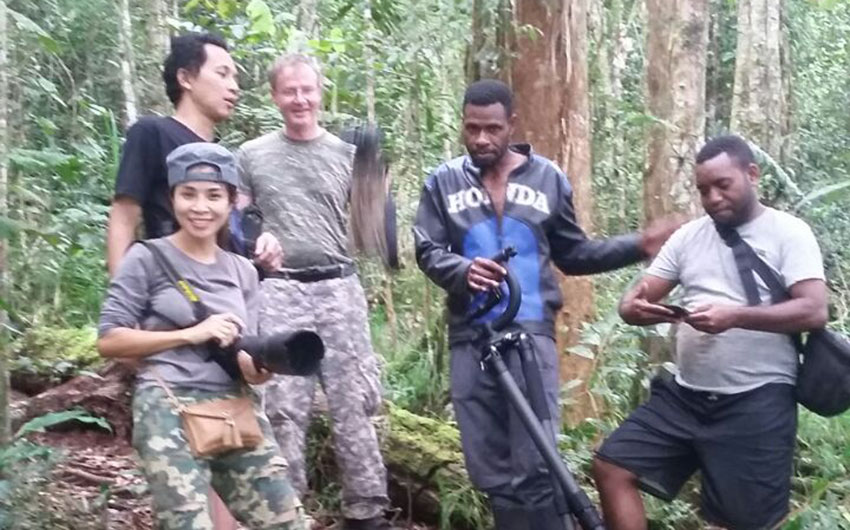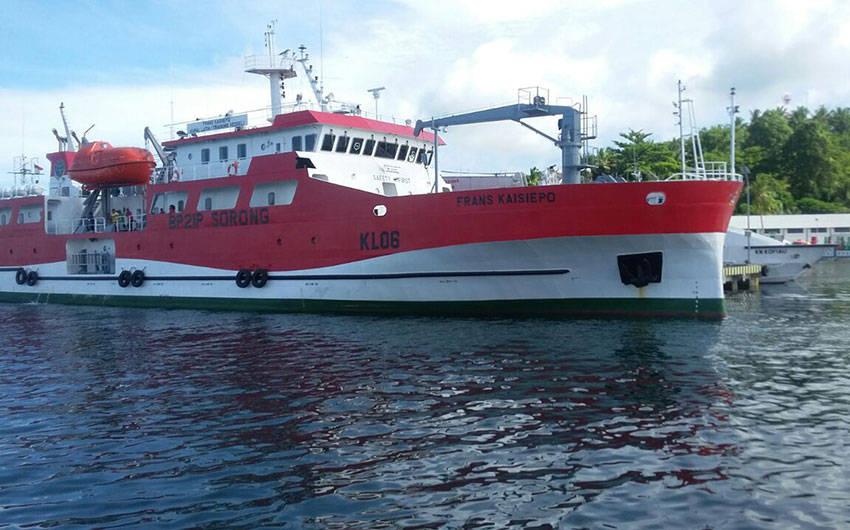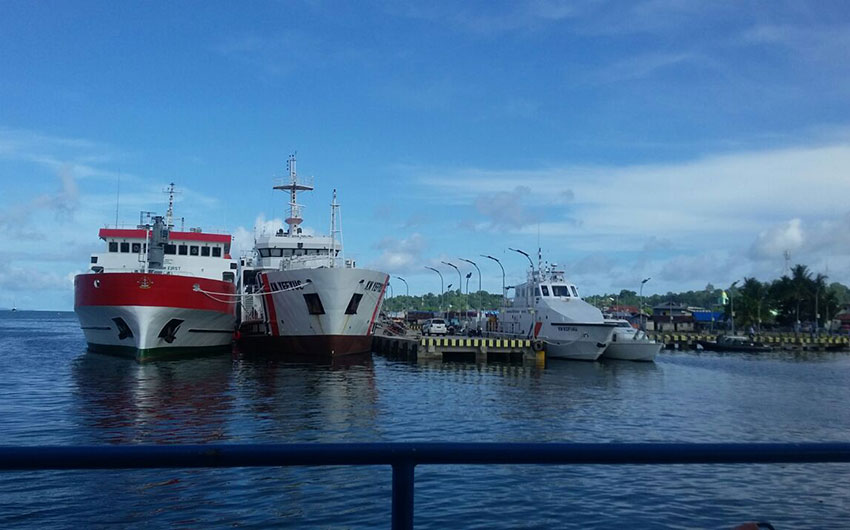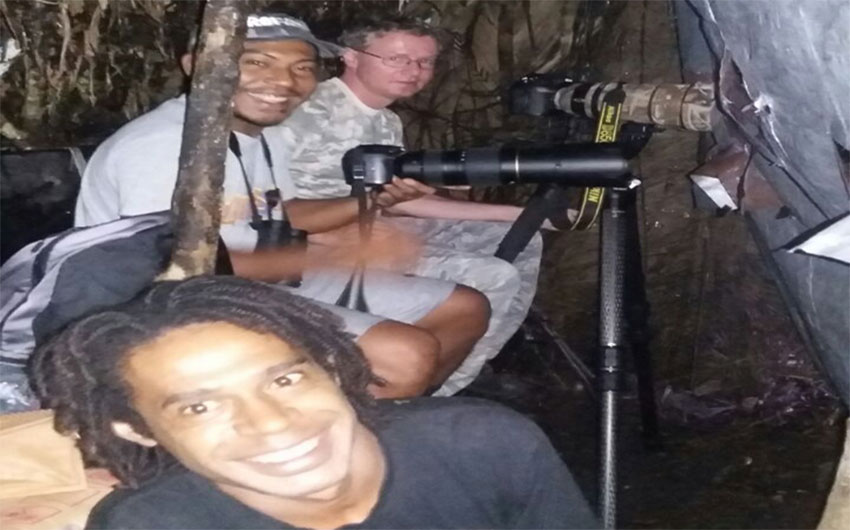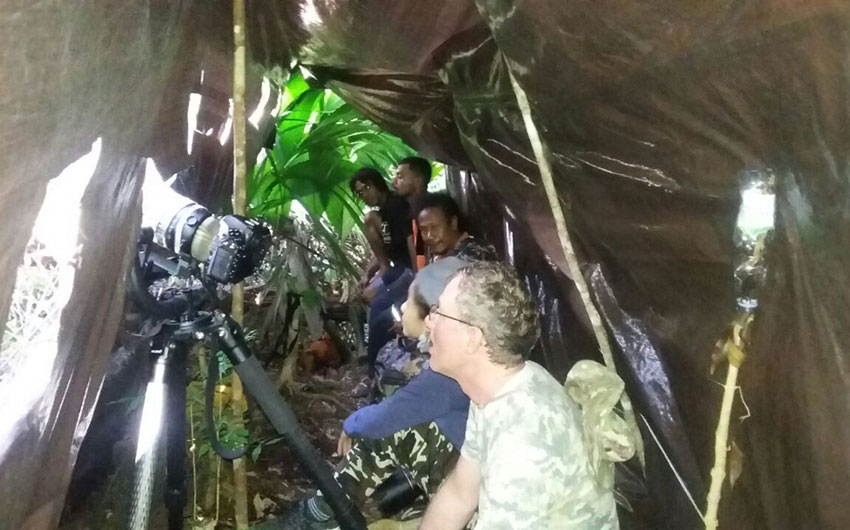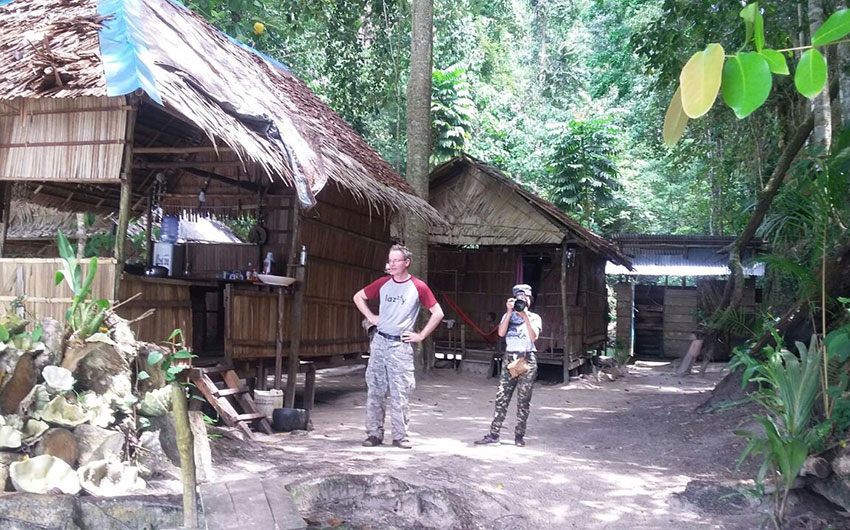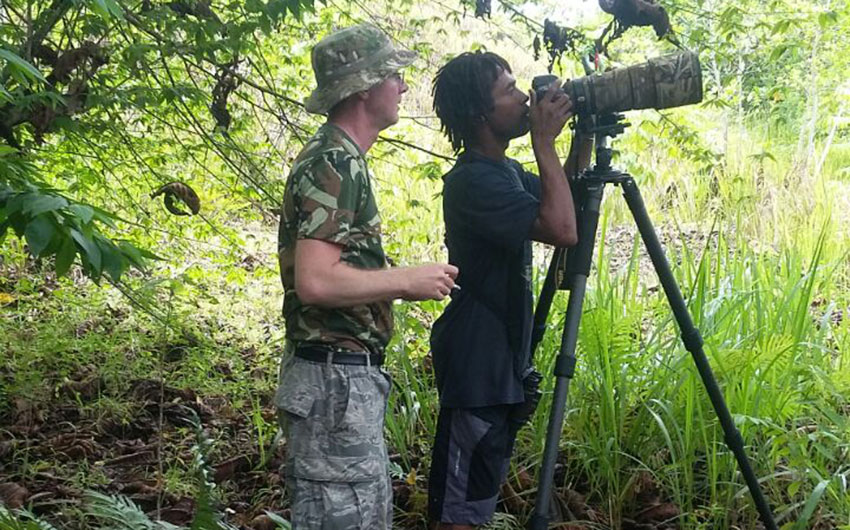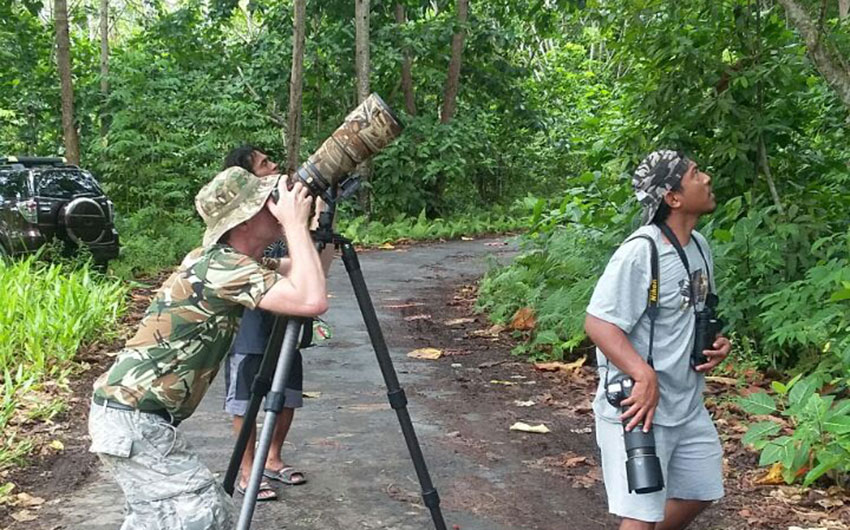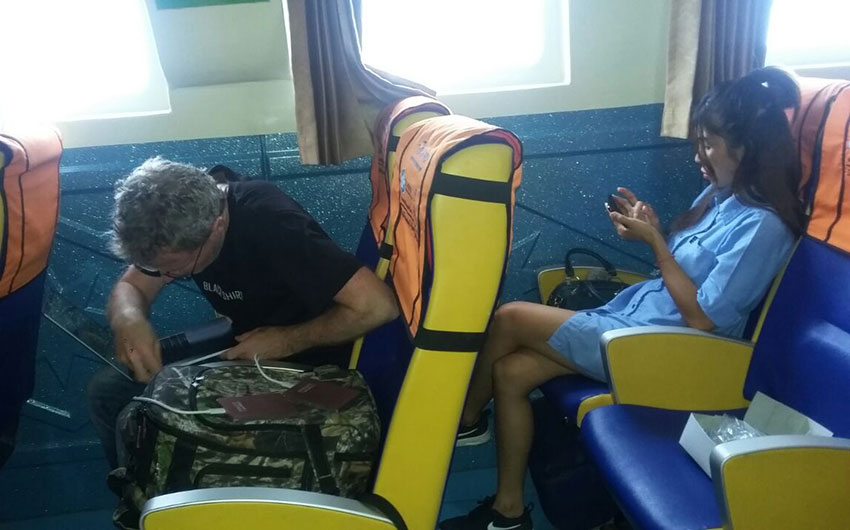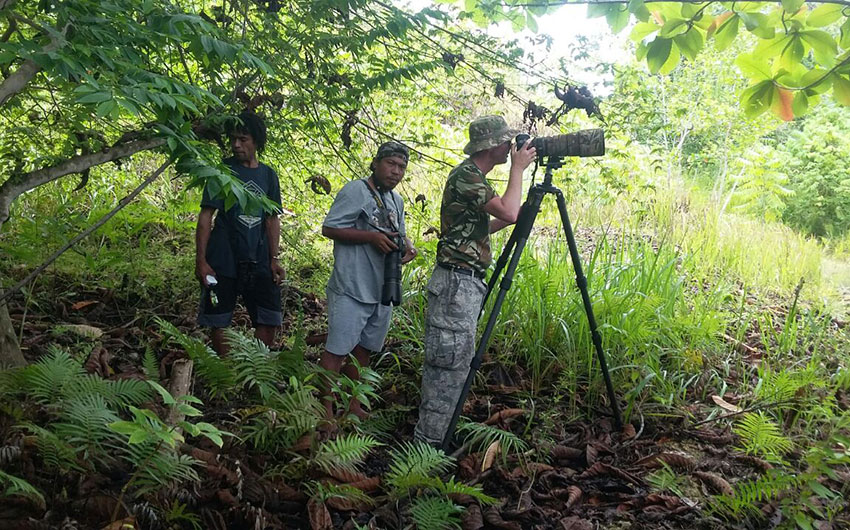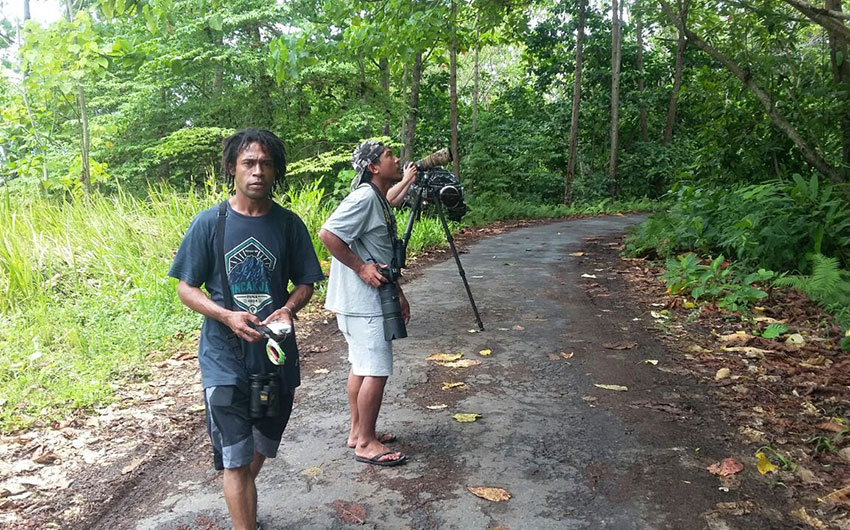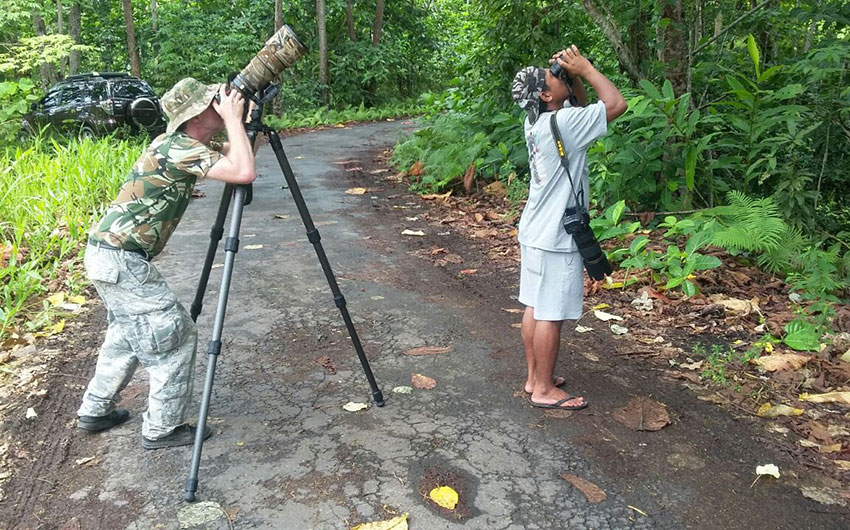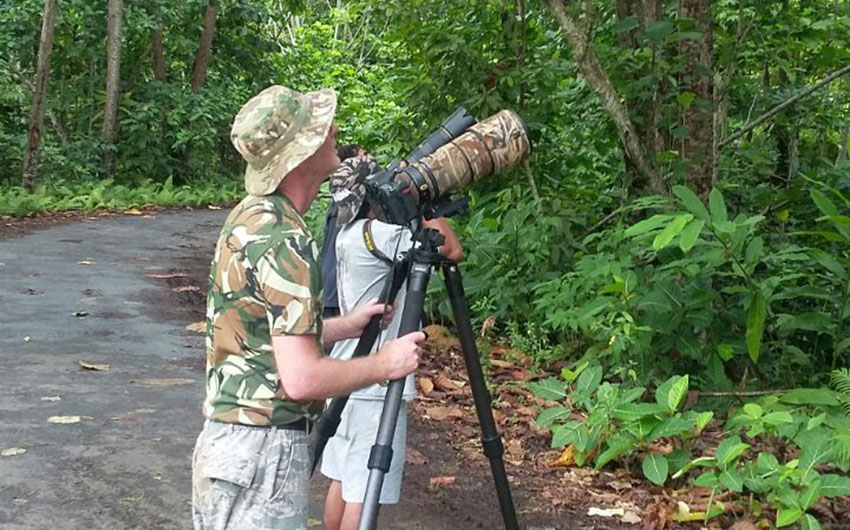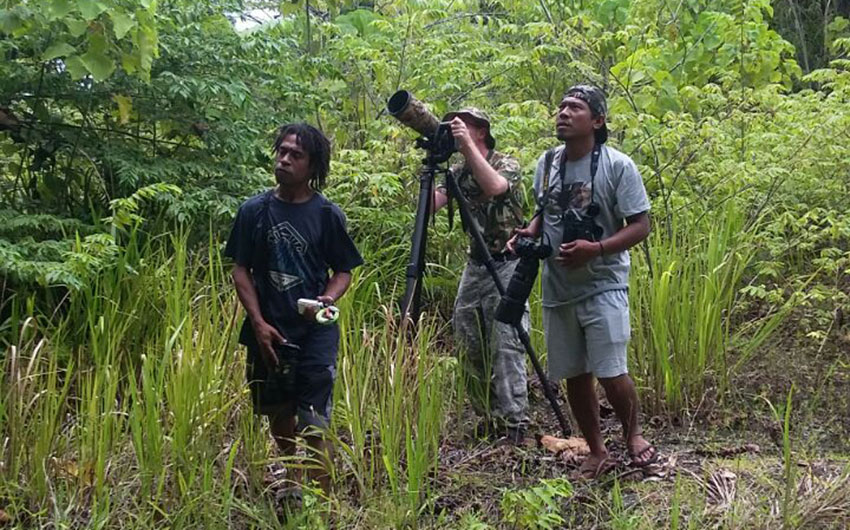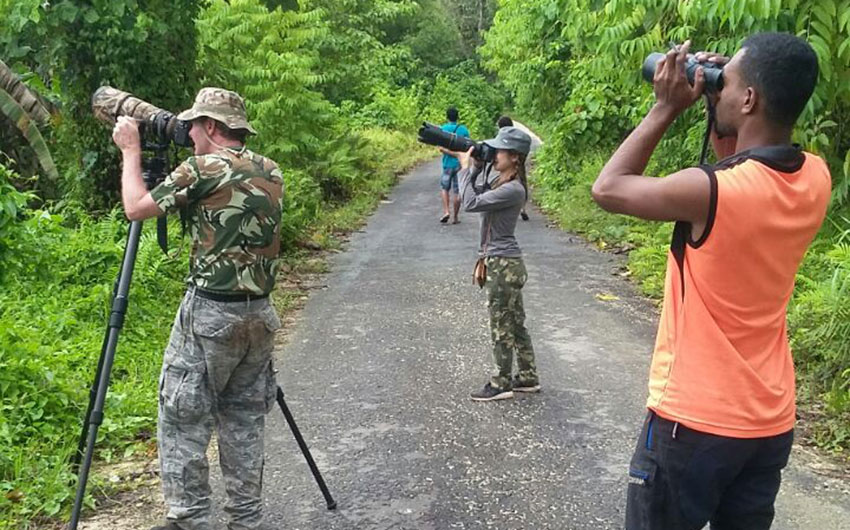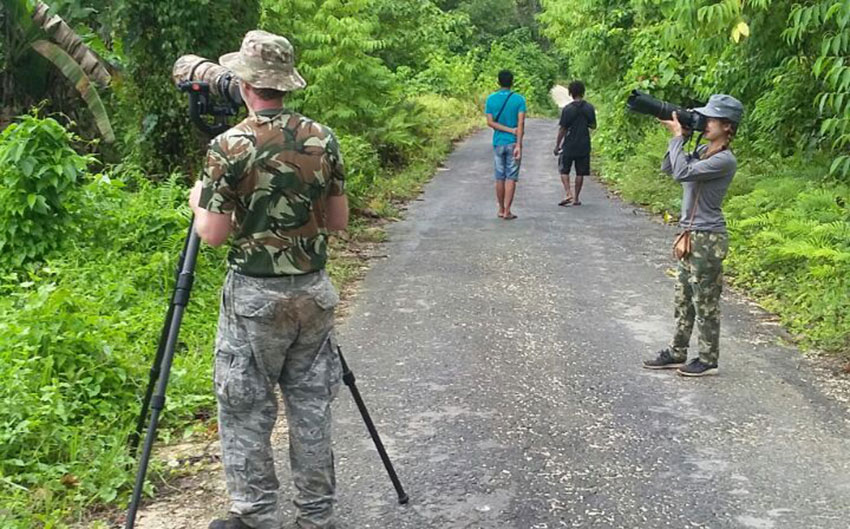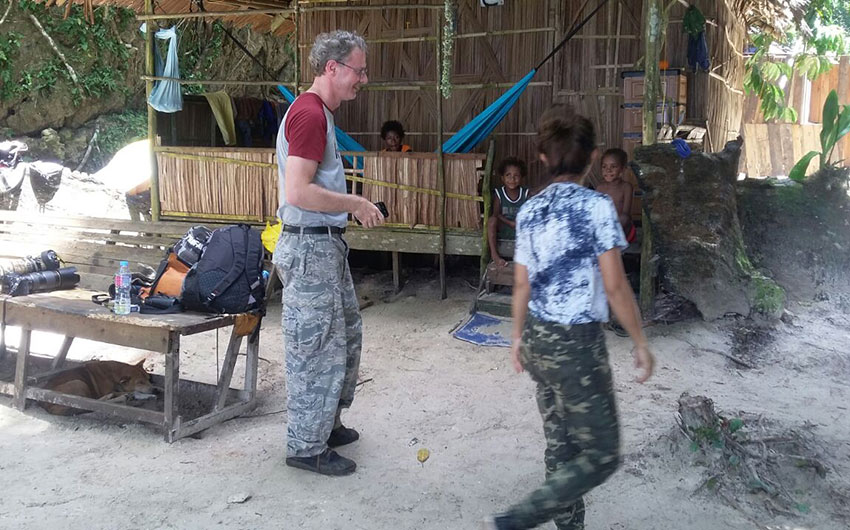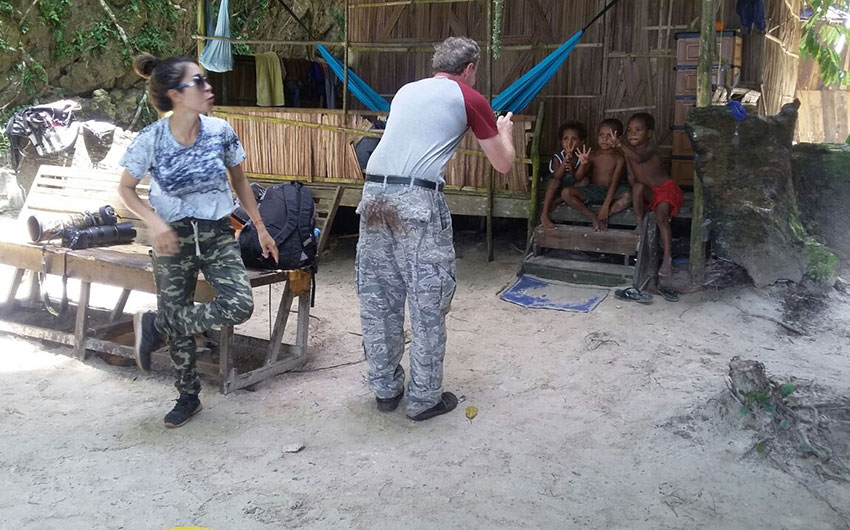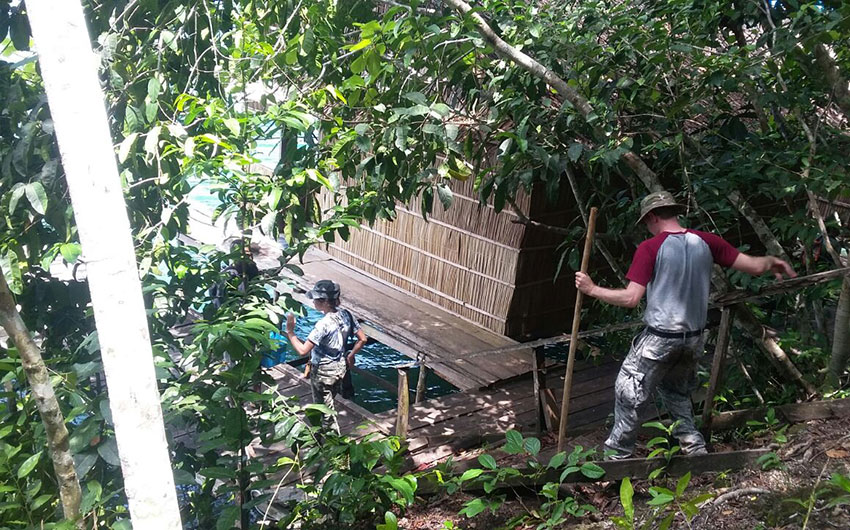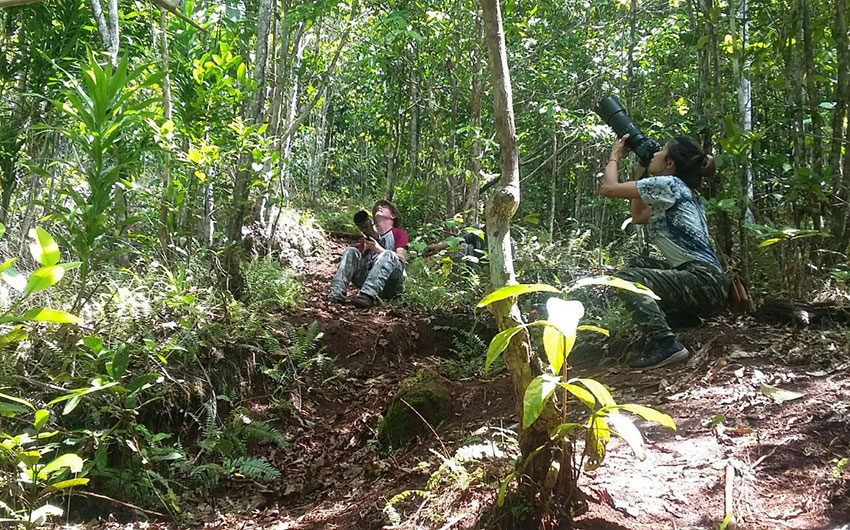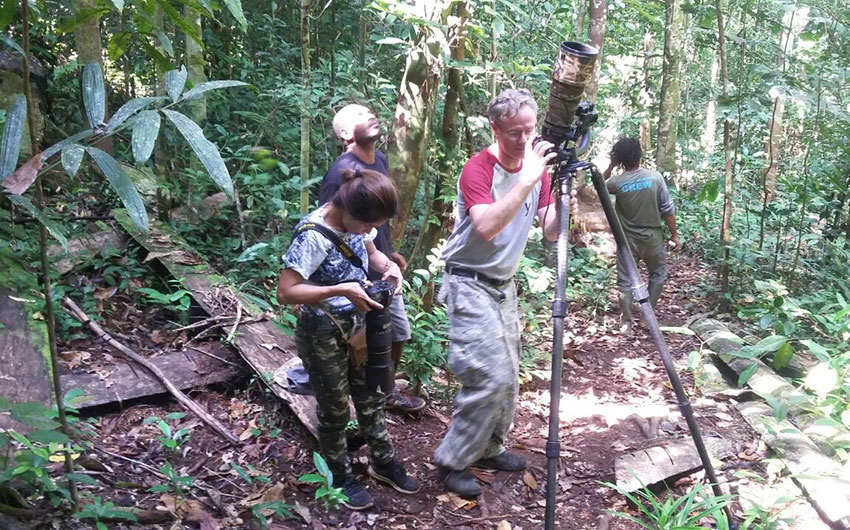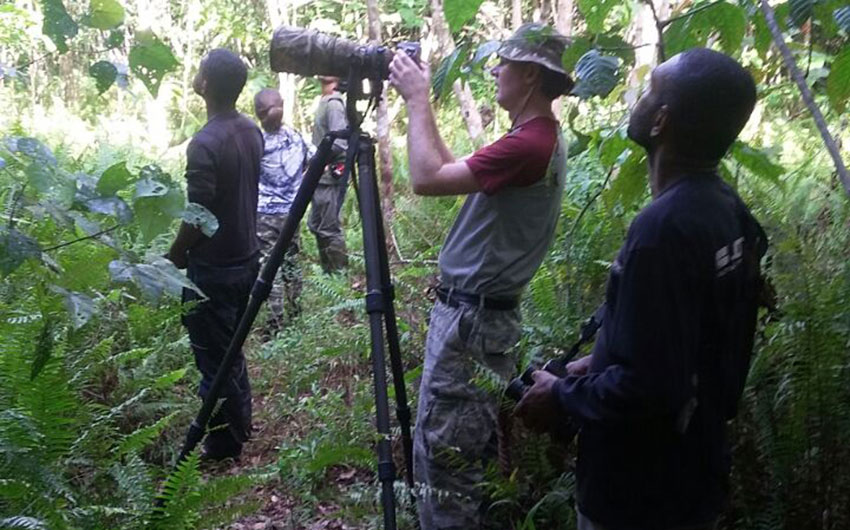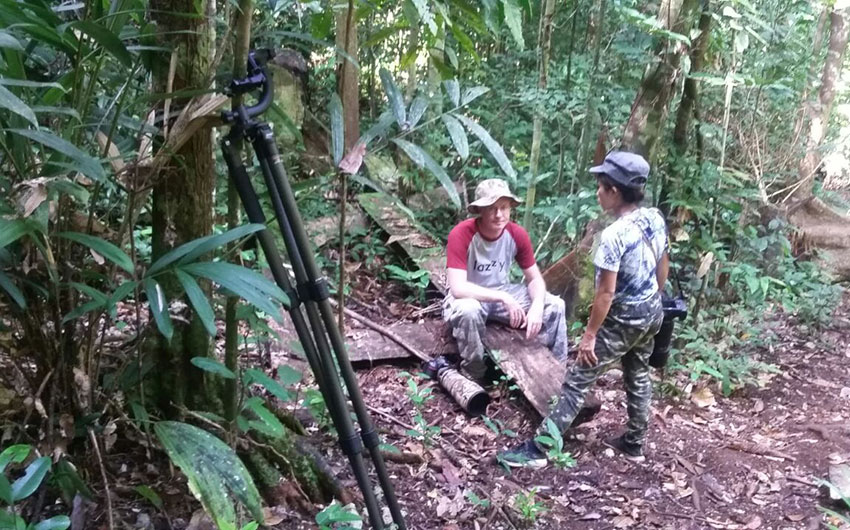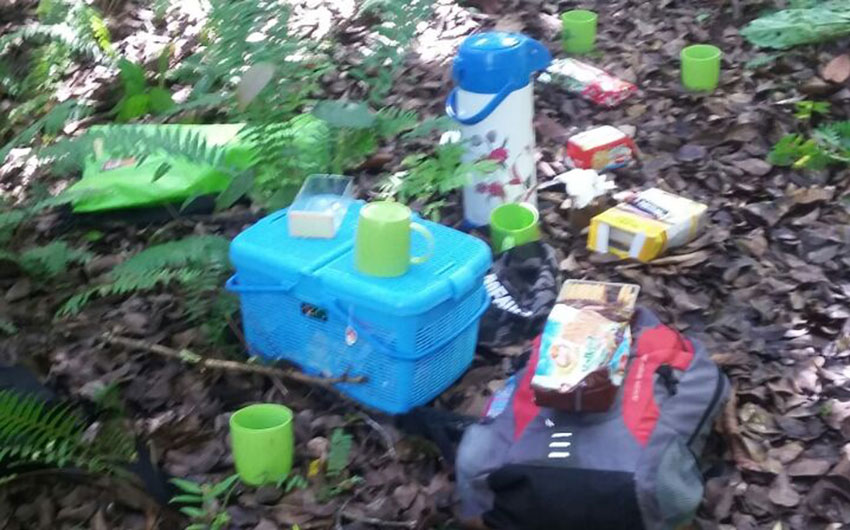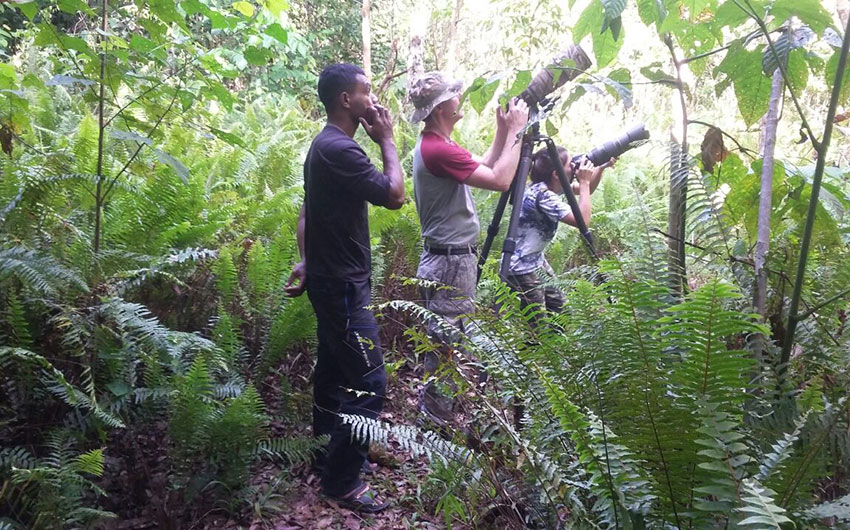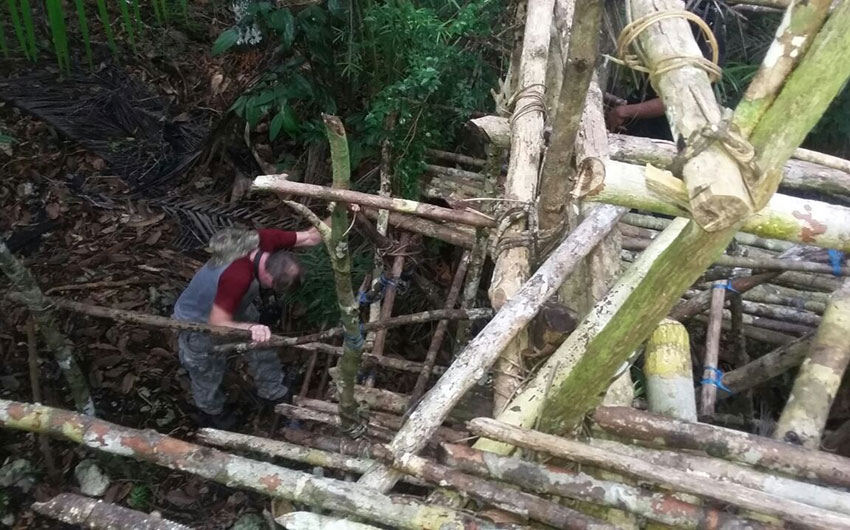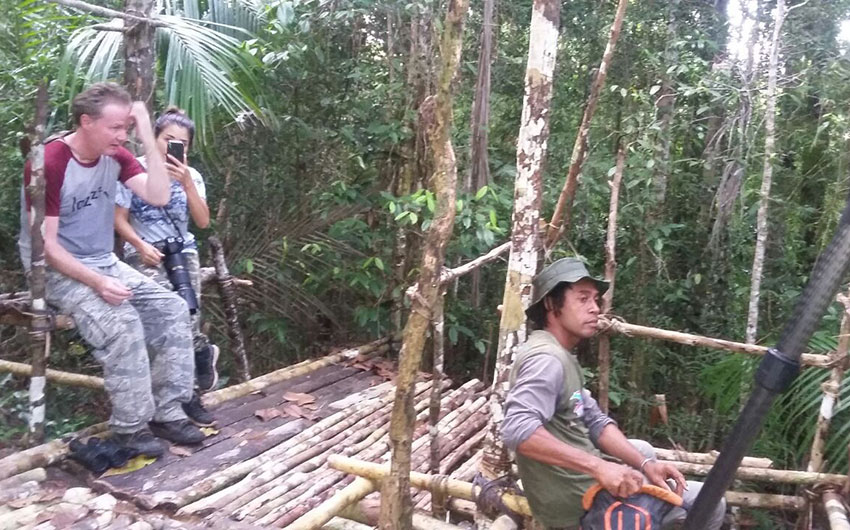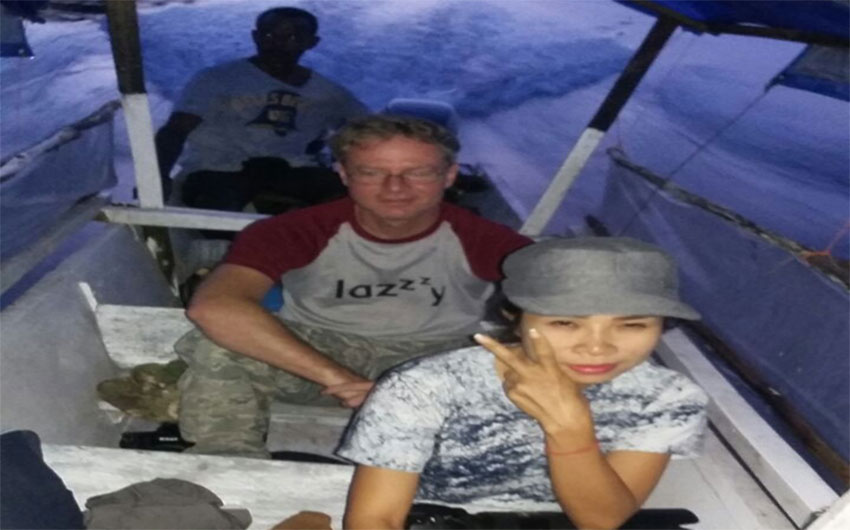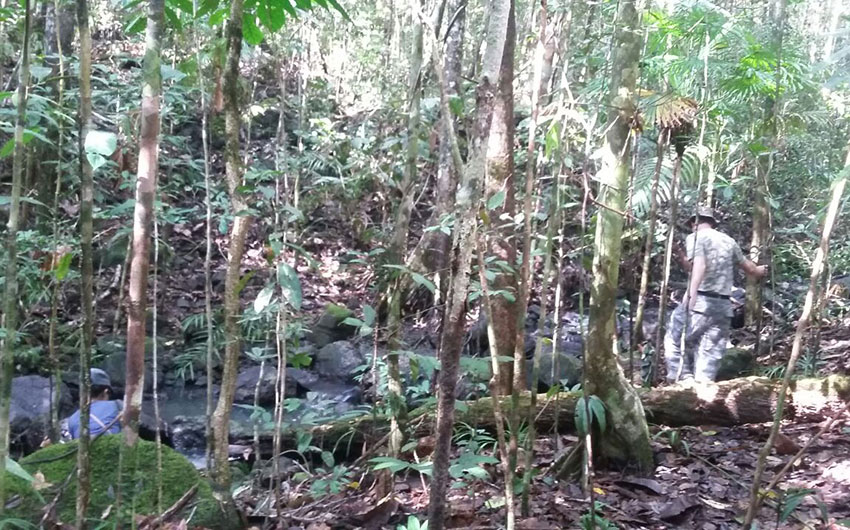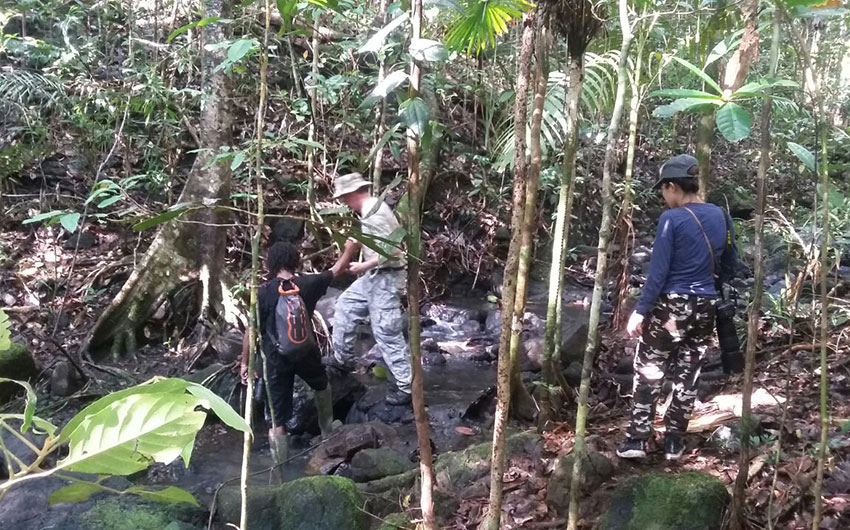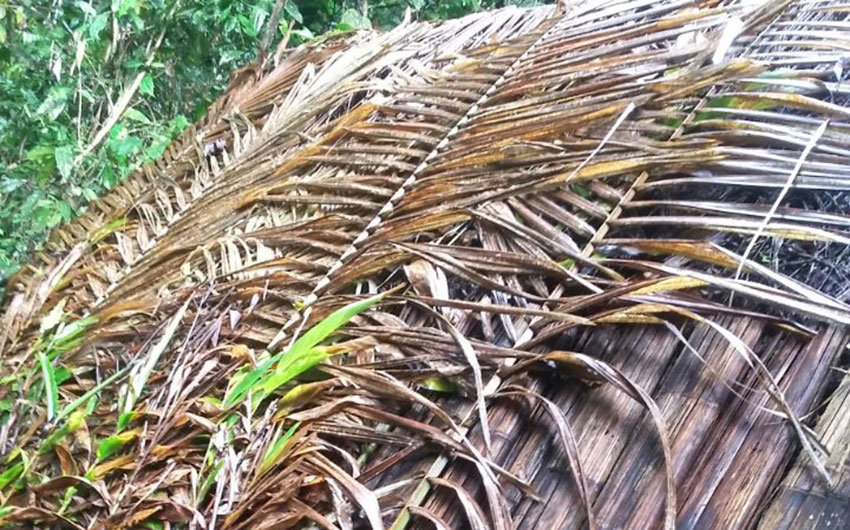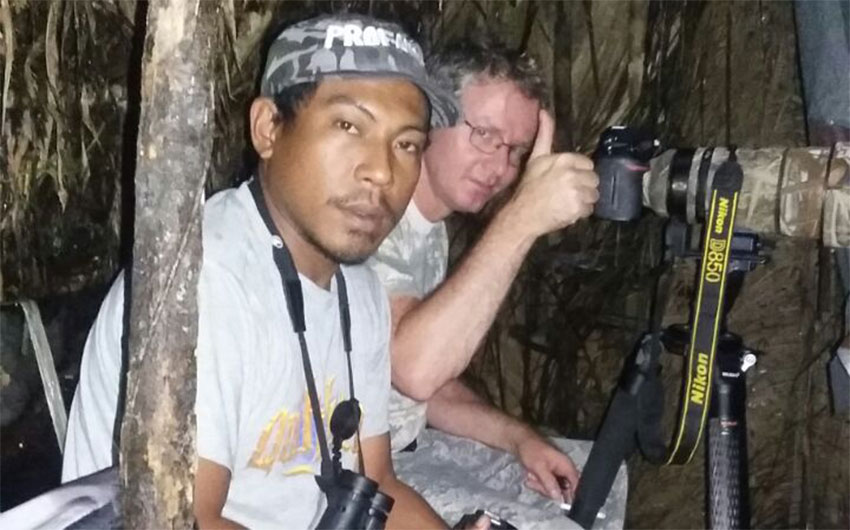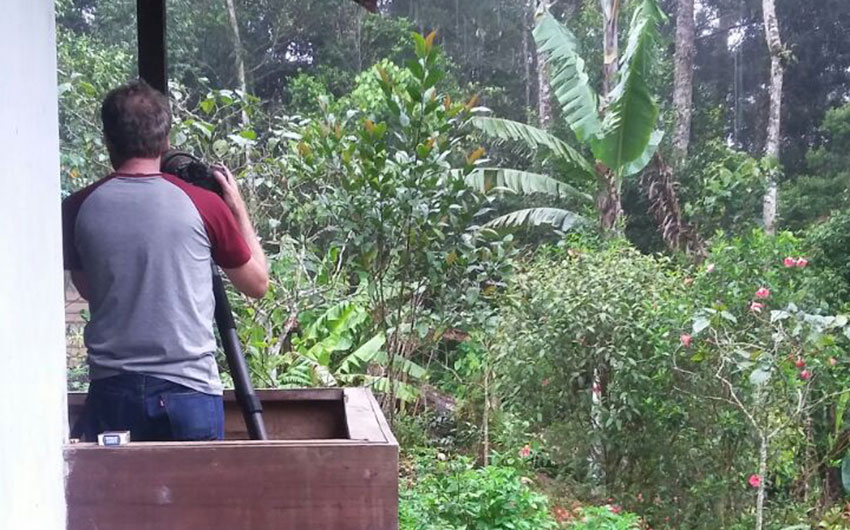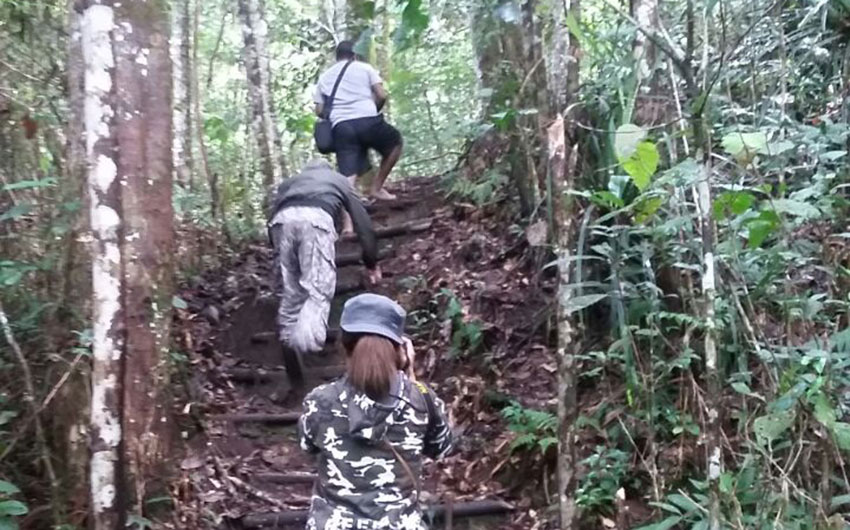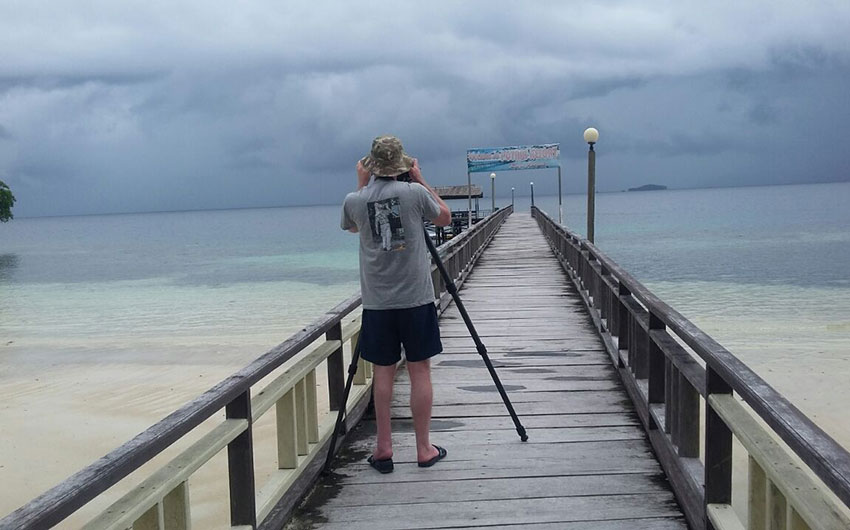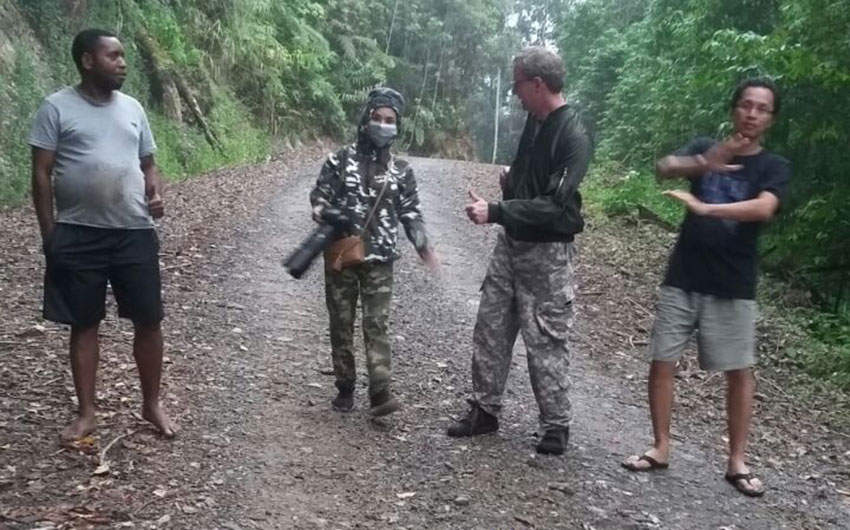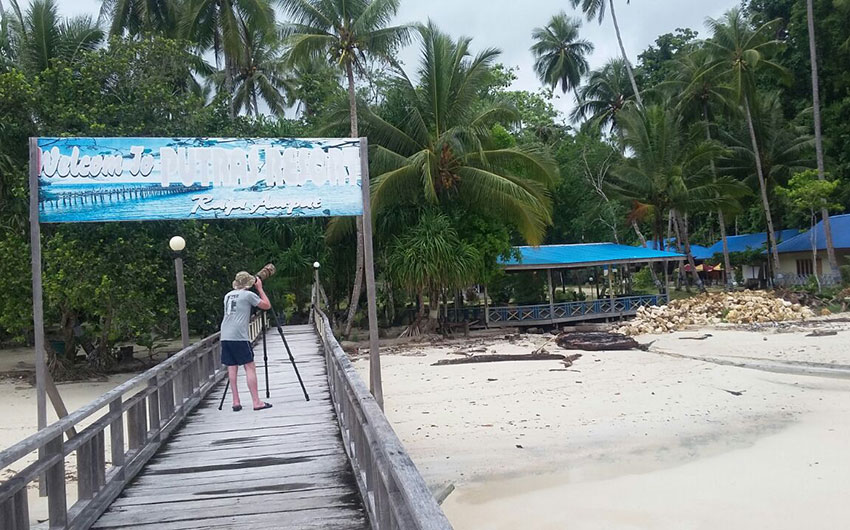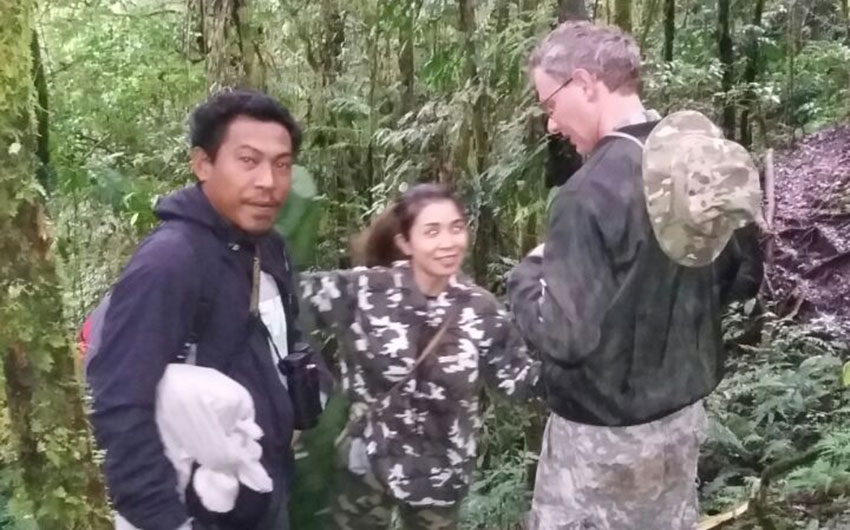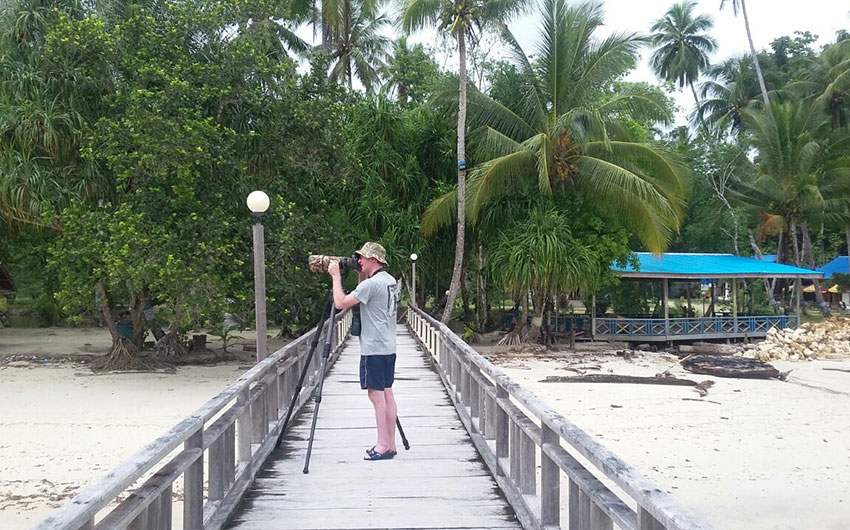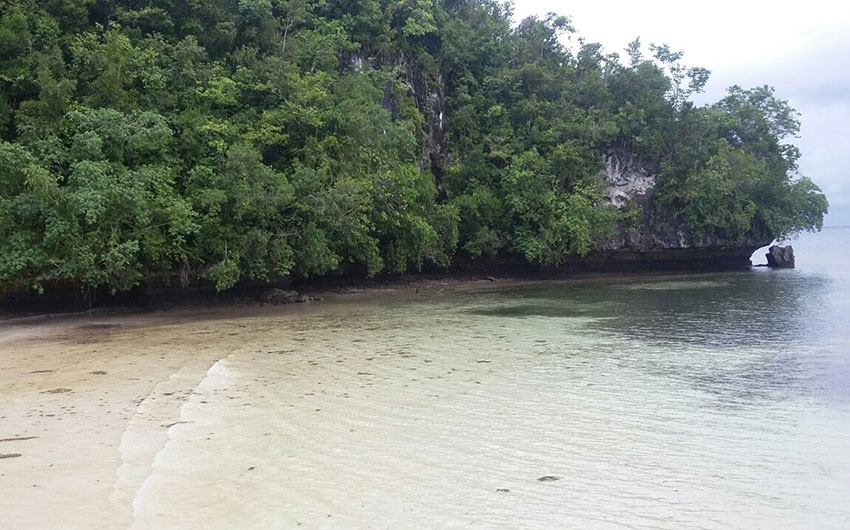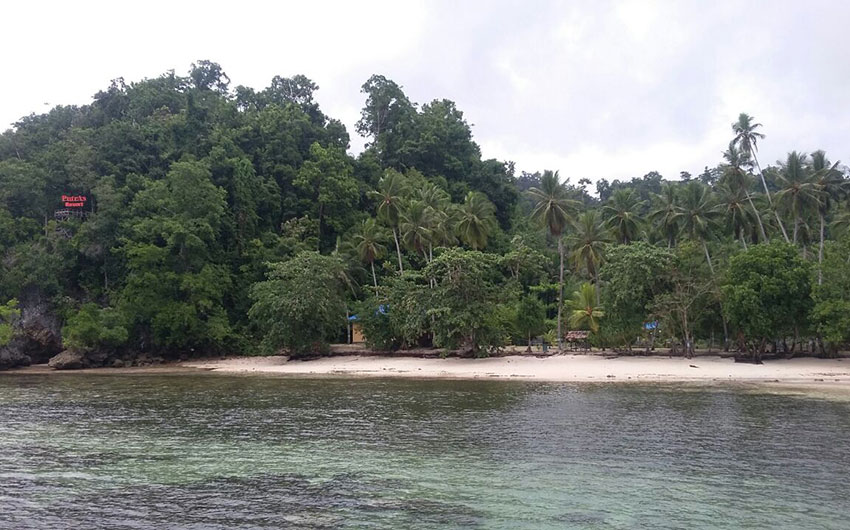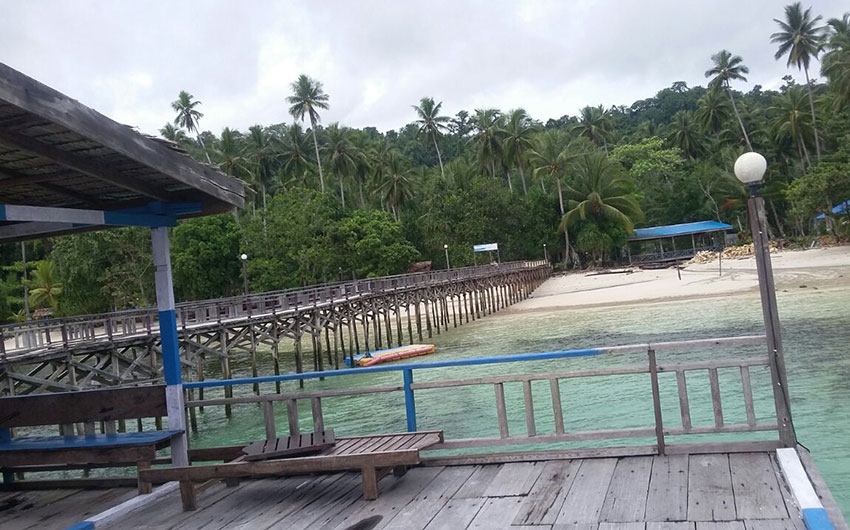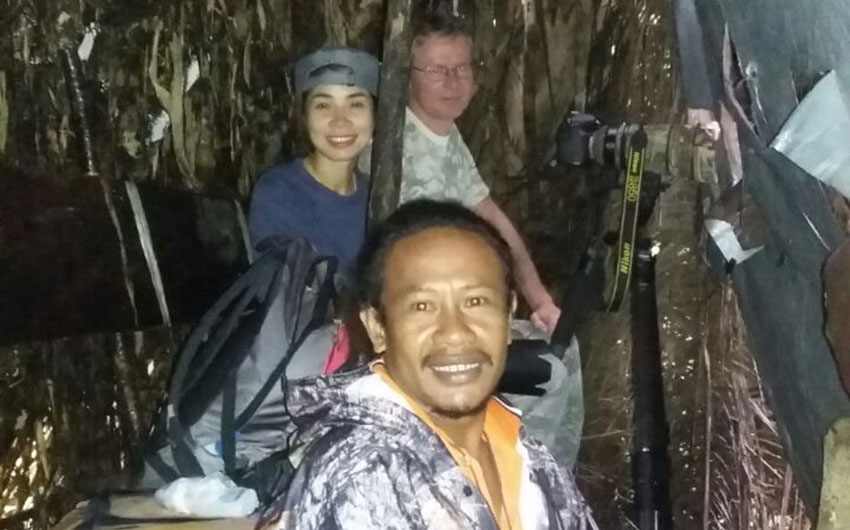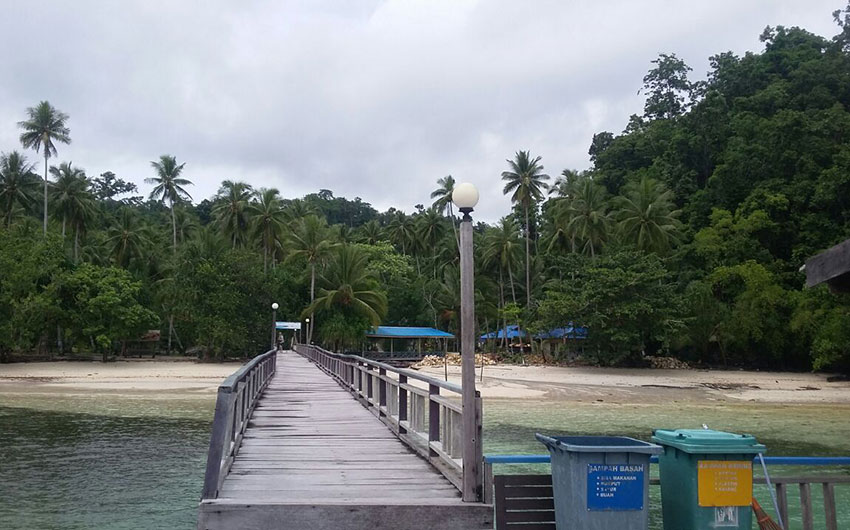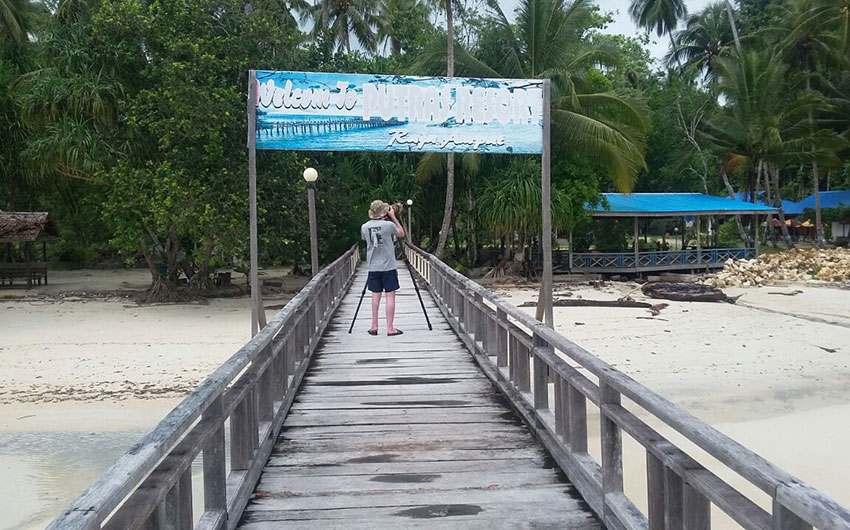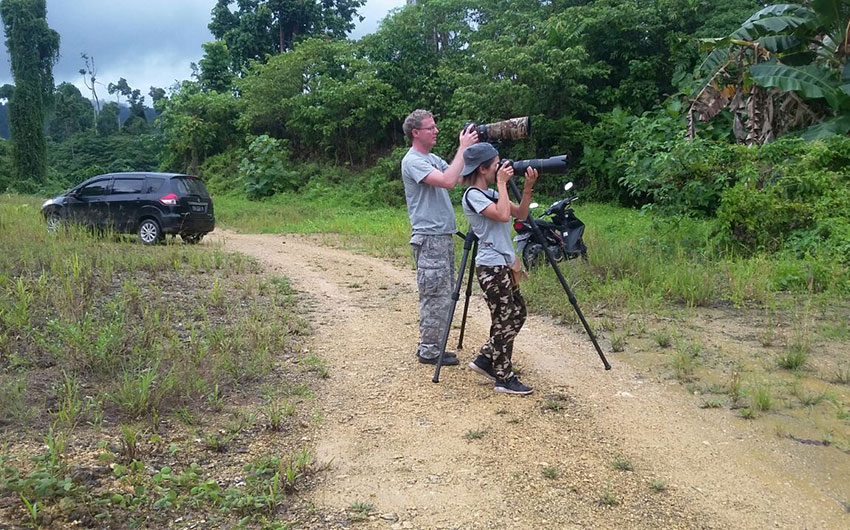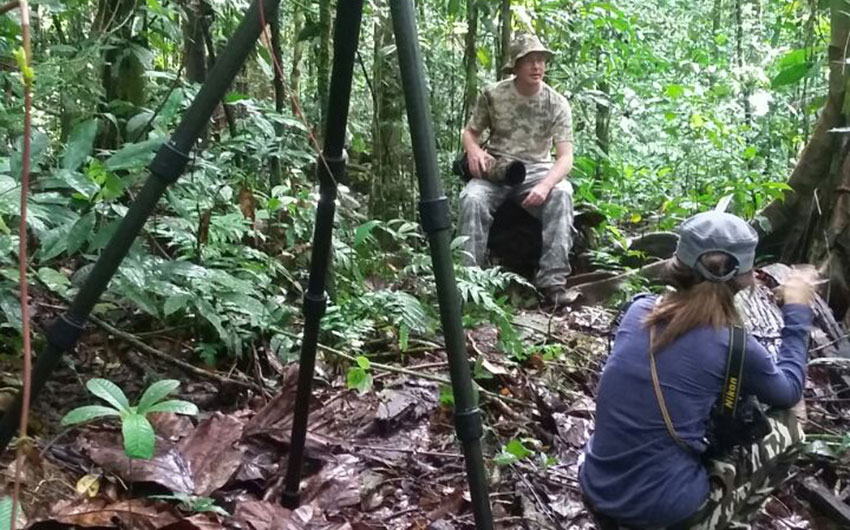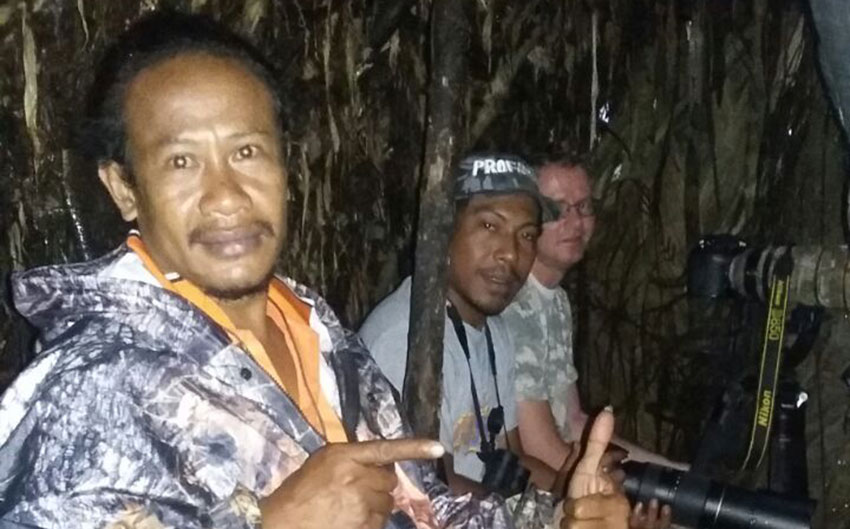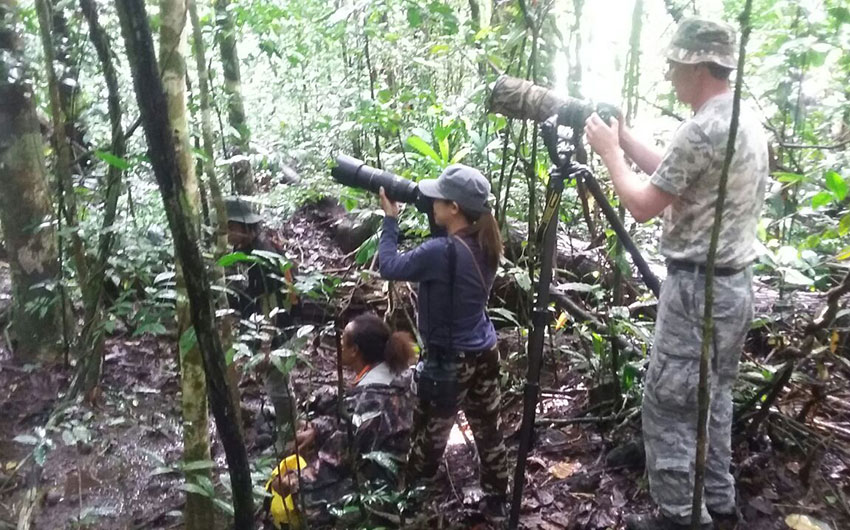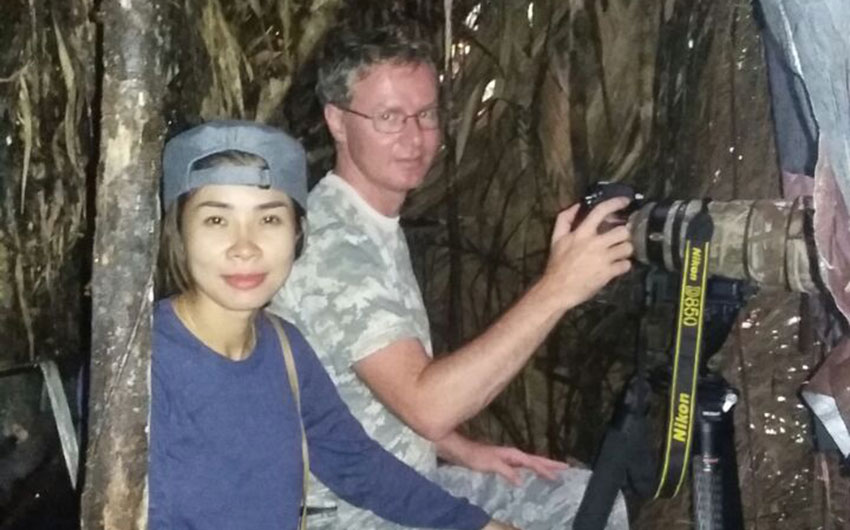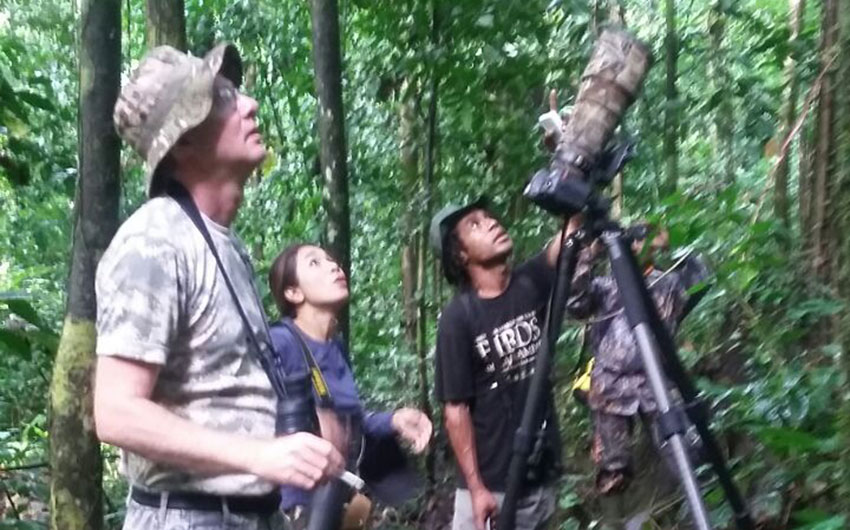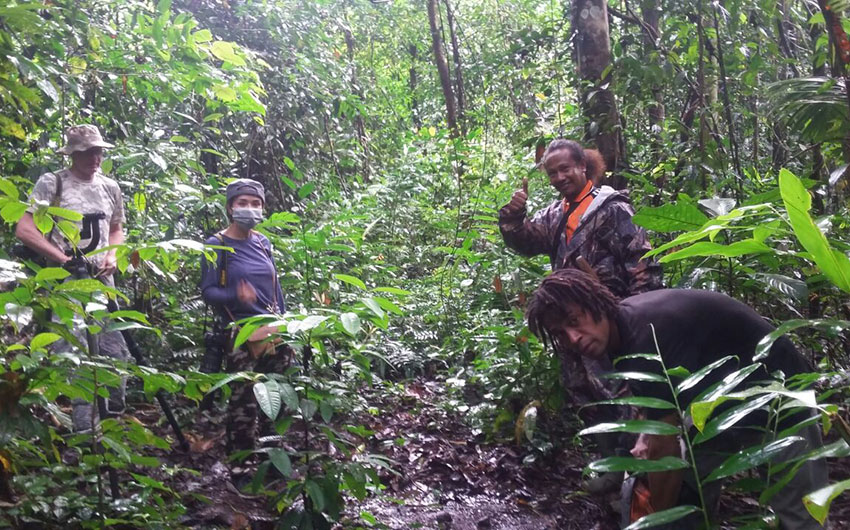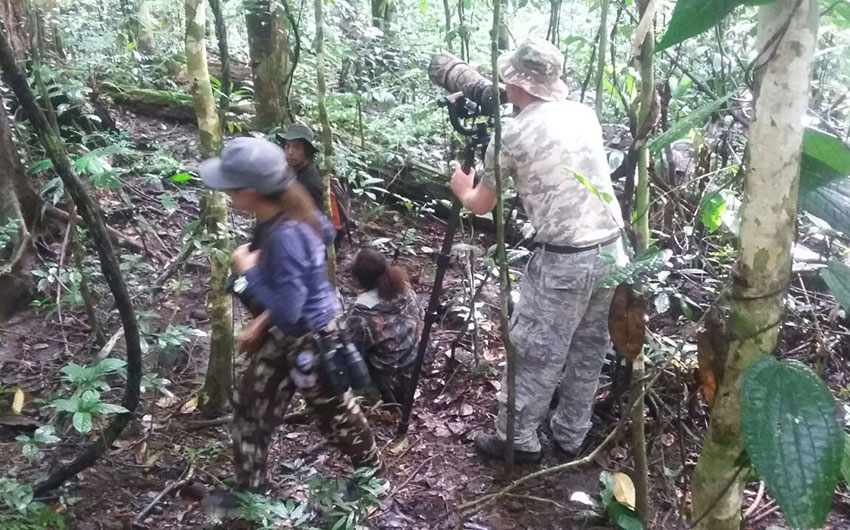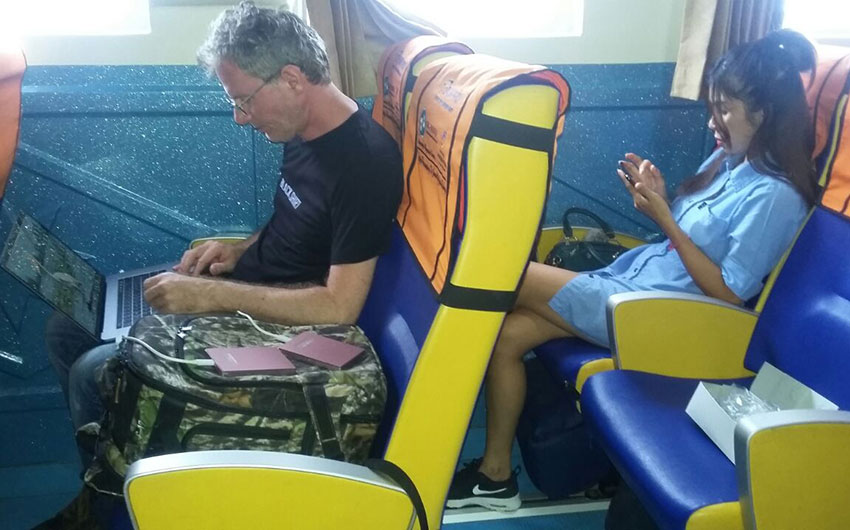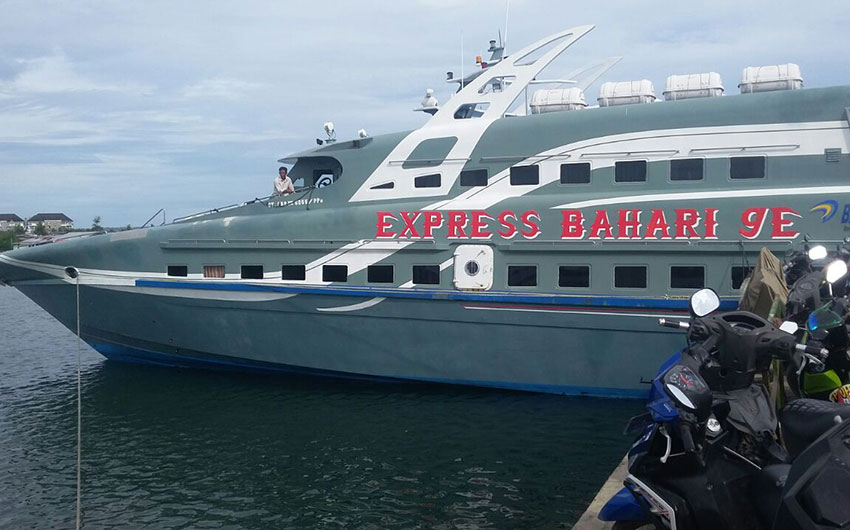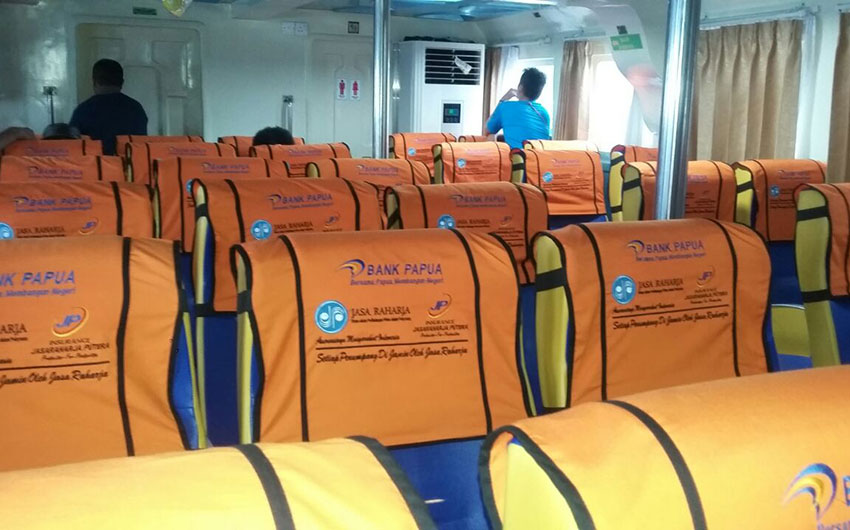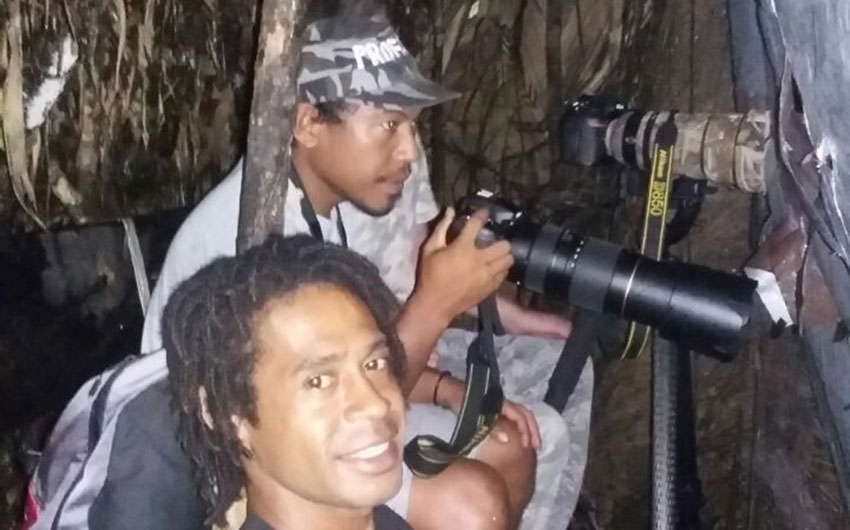Birding Period : February 25th , 2018 to March 10, 2018
Participants : 2 Pax
VIT’s Local Bird Guide : Bahar Hamanur and Charles Roring
Office Escort : Bahar Hamanur, Vit Partner in Papua : Rani Tumundo, Charles Roring and Mauritz Kafiar
The trip of Sulawesi part 1 you can read here http://www.vacationindonesiatours.com/news/tangkoko-nature-reserve-and-lore-lindu-national-park-birding-tours/
February 25th, 2018
The second time to Sulawesi visited Lake Lindu is still the area of Lore Lindu National park. Roland Duerig came from Jakarta by Garuda GA608 arrived at Mutiara airport Sis-Aldjufrie at 15:15 then met by Bahar and Fuad pungki then they drive to National Lodge.
February 26th, to March 1st, 2018
Morning drive to Sidaunta village about 3 hours then birding through the main trail Sidaunta to Puroo Village where situated on the bank of lindu Lake as long as 17 kms by hiking and also continue drive by motor bike. Ind Lindu lake birding by boat
March 2nd, 2018
Bahar (office escort of VIT), Roland and Ms. Nongnapat arrived at Rendani airport of Manokwari city by Garuda on flight number 690 at 10.10. The weather was very good. We had a clear blue sky with warm sunlight. Arriving at the main building of the airport, they still had to wait for their luggage to come out of the carousel. I (Charles Roring) met them at the exit door of the arrival terminal. We had a short introduction to one another and then began loading bags into the 4WD pick-up car that would bring us to Arfak mountains. We still could not leave the airport. Roland and Bahar told me that they needed a "cigarette stop" (they like smoking). After that I told the driver to park the car outside the drop zone to allow other cars to pick up other passengers. A few minutes later, we were ready to go. Now, with everybody was in the car, we left the parking area of the airport for Arfak mountains. Our driver was Oscar. We would spend 4 days hiking and birdwatching in the tropical rainforest of this bird's head region of West Papua to see several species of birds of paradise and other birds such as Vogelkop Bowerbird, Green-backed Robin and Feline Owlet nightjar and etc. First, we headed to Arfai area where we stopped for a while to buy some bottles of mineral water, soft drinks, biscuits and some packs of cigarettes. Ms. Nongnapat saw a street food vendor was trying to sell her a bowl of bakso. She was interested in the food and ordered one bowl. Bakso is meat ball noodle soup which has become a very popular snack in Indonesia. Her name was Riana, to our surprise, she spoke English quite well. Riana told me that she used to work in a hotel in Bali, that's why she could communicate in this international language. Riana gave the bakso that she had put inside a small plastic bag with very spicy tomato and chilli sauce to Ms. Nongnapat and received some money in return.
It was actually another cigarette stop for Roland and Bahar. Oscar joined them. Bahar took out a pack of White Marlboro and shared with them. So, we still had to wait for two or three minutes before leaving again.
When Oscar turned on the car engine, we knew that we would continue our trip again. This time, Oscar drived faster. It took approximately 2 hours to reach our destination. The road to Arfak mountains were very steep, muddy, slippery and nearly fifty percent of its length were damaged or in bad condition. There were some parts of the road that had been carved by fast flowing rain water and flooded river. Construction workers in their excavators, buldozers, and trucks were seen busy repairing, flattening, widening the road. Fortunately, our driver was an experienced one. The 4wd car was powerful and also in good condition. Our car stopped at the entrance path of Kwau guesthouse located at the foot of Mount Soyti of Arfak mountains at approximately 14.00 local time. We were quite late because we made several stops to buy more fruits, and for Roland, Bahar, and Oscar to enjoy another "cigarette stop" to each of them.
Local villagers who followed us during the trip helped us unloading our bags and food materials and carried them to the guesthouse. I immediately gave the raw food materials to women in the kitchen to prepare our lunch. Because it would take around one and a half hour to make it ready, I decided to organize a short birding trip for Roland, Nongnapat and Bahar. Hans, our local guide, accompanied them to the blind of Vogelkop Bowerbird (Amblyornis inornatus). It was approximately a 10-minute walk from our guestwalk. I stayed at the kitchen to help the mothers prepare hot water and lunch.
One and a half hours later Bahar, Roland, and Nongnaphat returned to the guesthouse. They successfully saw the male Vogelkop Bowerbird. He landed on his bower several times arranging flowers, fixing and installing new dry stick for the roof of his bower and putting small shiny insect that looked like a tiny ball.
After lunch, it rained, so we did not go out. At the front-yard of the guesthouse, we saw Yellow-legged Flycatcher.
Nongnaphat took a rest earlier. I, Bahar and Roland stood at the rear balconies of our bedrooms to watch birds that like to play among the leaves and branches of the trees or eat nectar of the flowers at the backyard garden. During that easy birding session, we were able to watch Black Fantail (Rhipidura atra), Golden Face (Pachycare flavogriseum) which was very beautiful, Blue-grey Robin (Peneothello cyanus), Spectacled Longbill (Oedistoma iliolophus), and Yellow-legged Flycatcher (Kempiella griseoceps). At around 16.30 local time fog started to cover the forest and soon rain fell again. I told Bahar, and Roland to take a rest because they had woken up early at 03.00 in Makassar before taking their morning flight to Manokwari.
Our dinner was fish that was cooked with tomato and chilli sauce, tempe in sweet soy sauce, sawi vegetables and fried scrambled eggs. All of us returned to our bedrooms and slept early at around 08.00.
March 3rd, 2018
We woke up at 05.00. It was still dark outside. I had asked local villagers to prepare hot water for making tea or coffee, and fried banana. We also had for our breakfast: some biscuits, riped banana fruits and rambutan, bread and peanut jam. At around 5.40, we started walking from the guesthouse. I was at the front to show the path, followed by Roland, Nongnaphat, Bahar and our porter - Daniel. He was a student who was still studying in the Univ. of Papua. We had to walk up very steep slopes of Mount Soyti for approximately 30 minutes. We reached the blind (the birding hut) which was located at 1,500 meters above sea level. I turned on my torch and entered it to check the bench and the interior. After confirming that the blind was clean and safe, I let Roland, Nongnaphat and Bahar entered it. That's the dancing ground of Western Parotia (Parotia sefilata). I and Daniel walked back to the guesthouse again.
They watched the birds for approximately one and a half hours. As a matter of fact, it was not the mating season of Western Parotia. To increase the chance for the birds to show up at the birdwatching site, we put Red Pandanus fruit near but outside the dancing ground. As a result, Bahar, Roland and Nongnaphat were able to see female Western Parotia, and female Black Sicklebill (Epimachus fastosus). Miss Nongnaphat (who was from Thailand) could even make a short film of a mother Black Sicklebill feeding her juvenile daughter. Roland and Bahar even said that they saw a big green bird landed on the ground but then flew away quickly. I guessed it was a Black-eared Catbird. At approximately 07.30, it began to rain again. I immediately took a raincoat and walked up the slope to pick them up. I only had one raincoat. I lent it to Mis Nongnaphat and took her camera which she had put into a transparent plastic sheath. We slowly walked back to guesthouse again. Arriving at the guesthouse, located at 1,300 meters above sea level, everybody headed to the dining room for some hot tea and coffee. They shared their stories of their morning birds and I helped them identify the birds from pictures which they showed from the screens of their cameras. We used field guide book: Birds of New Guinea written by Bruce Beehler and Thane K. Pratt. After having hot tea and coffee and a lot of interesting discussion about birds, they returned to their bedrooms again. Outdoor temperature was approximately 20 degrees Celcius. It was still raining at 09.20.
Bahar just reported that he saw a Sclater's Whistler (Pacychepala soror) at the backyard garden of the guesthouse). Roland was able to take picture of Grey-green Scrubwren (Sericornis arfakianus) before lunch. There were a lot of Taenaris schoenbergi kenricki butterflies.
Bahar, Roland and Nongnaphat did another attempt to watch Western Parotia starting from 14.00 to 17.00. This time, they were able to watch the male Western Parotia besides the female birds which they had seen in the morning. I saw 3 Papuan Mountain Pigeons (Gymnophaps albertisii), and a pair of Plum-faced Lorikeet (Oreopsittacus arfaki) flying over our guesthouse.
Our dinner was served at 18.30 local time. Rice, sweet potato, canned tuna cooked with tomato sauce, and pakcoy were the main ingredients of the food. After dinner, I and Hans gave short briefing about tomorrow's birding plan. At 20.00 local time, everybody returned to his or her bedroom.
March 4th, 2018
This morning we woke up at 04.30 and had coffee and tea with some fried banana. We planned to leave for the birding ground of Magnificent Bird of Paradise at 05.00. Unfortunately, when we were about to leave our guesthouse, it started to rain. So, I decided to postpone our departure for 1 hour. When the rain stopped, finally, we could leave. The sky was already bright and our surroundings were filled by the sounds of morning birds. We walked down the slope behind our guesthouse, crossed a small stream and then up some slopes, and then down again to the birdwatching site. When we arrived, it was 07.15 already. I saw a male Magnificent Bird of Paradise flying away from the red fruit that Hans had put in front of the birding hut. I entered the blind and checked its interior condition using my small torch. It was dry enough and clean. So, I asked Roland, Nongnapat, and Bahar to enter it. I and our local porter - Daniel left them and waited for them at the house of Hans - located approximately 300 meter away from the birding site.
While we were waiting for them at Han's house, we saw a Golden Face (Pachycare flavogriserum). I gave my camera to Daniel. He could take a picture of Black-winged Monarch (Monarcha frater). With my binoculars, I could watch Grey-green Scrubwren (Sericornis arfakianus), and Black Fantail (Rhipidura atra). That morning, in the blind, Bahar, Roland and Nongnapat could watch two male and one female Magnificent Birds of Paradise (Diphyllodes magnificus), one Black-eared Catbird (Ailuroedus melanotis) and one Sclater's Whistler (Pachycephala soror). Roland and Nongnapat could make a lot of beautiful pictures of these colorful birds. At approximately 10.30, we walked slowly back to the guesthouse again using a different route. Lunch was served at 12.30. Because, we woke up early that morning, we felt sleepy and exhausted. We decided to sleep for a while. Before going to my bedroom, I asked Hans, our local guide, to find Feline Owlet Nightjar and Mountain Owlet-nightjar. It took nearly two hours for him to bring me good news. He could only find the Feline one. I immediately woke everyone up and told them if they wanted to see the bird. Twenty minutes later, Bahar, Roland and Nongnapat met me and Hans and Daniel outside the dining room. We walked slowly up the steep slope in front of our guesthouse, crossed the road and up the steep slope of Mount Soyti to the place where the Feline Owlet-nightjar had been found sleeping. It was quite difficult to reach the site - very steep, and slippery. He was sleeping on the branch of a small tree with some small branches and green leaves around him. One by one, Roland, Nongnapat, Bahar and Daniel took turn in shooting the bird. They had to maintain a safe distance during the picture taking session to disturbing the bird. One side of the bird's face was covered by a leaf making it even more difficult to take picture of his face and eyes.
After taking pictures of the Feline Owlet-Nightjar, we walked down the slope of Mount Soyti and do and easy birding walk along the road side of Mokwam region. We were quite happy to see a female Grey-Wagtail (Motacilla cinerea), Black Fantail, and Yellow-billed Lorikeet (Neopsittacus musschenbroekii). I could hear the calls of Vogelkop m
Melidectes but was not able to see it. Arfak range was rainy season in March. It was quite cold in the mornings and evenings. Rain and fog often covered the rainforest. Besides birds, we were able to see Male and Female Ornithoptera titonus butterflies in the flower garden of our guesthouse that day. They were birdwing butterflies that had got beautiful colors.
When it started to rain again, we returned to our guesthouse. Our dinner that night was smoked fish cooked with chilli and tomatoes, and vegetables.
March 5th 2018
This morning we woke up later than usual at 05.30. Our plan was to return to the dancing ground of Western Parotia hoping to see male Western Parotia performs his courtship dance. After eating hot vegetable-noodle soup and some tea, we left the guesthouse. Along the path to the birding site, we could hear the sounds of Vogelkop Melidectes (Melidectes leucostephes) and Sclater' Whistler as well as Black-eared Catbird. Twenty minutes later, we reached the path that led us to blind. I asked Hans and Daniel to accompany Bahar, Roland, and Nongnapat to the blind. I waited at the main path. Several minutes later, I, Hans, and Daniel returned to the guesthouse. Hans saw Eastern Yellow Wagtail (Motacilla t. tschutschensis). We saw several pairs of Black Fantail (Rhipidura atra) flying and landing on the branches of shrub plants that grow around the frontyard of the guesthouse. I also saw a small bird - Green-backed Gerrygone.
After watching Western Parotia, we went birding along the road again where we Ms. Nongnapat successfully shot Vogelkop Melidectes and Friendly Fantail (Rhipidura albolimbata). I saw Western Smoky Honeyeater (Melipotes gymnops) flying fast crossing the road above our heads. On the way back to our guesthouse, we saw Grey Wagtail flying low away from us along the roadside.
After lunch, while waiting for the car to take us back to Manokwari city, we continued birding from the balconies of our bedrooms. We saw Western Smoky Honeyeater, and Mountain Fruit-Dove (Ptilinopus bellus).
At 14.00 our car arrived. I, Bahar, Hans, and Daniel started to load Roland's and Nongnapat's and our bags into the car. We left Arfak mountains fifteen minutes later. The weather was clear and we were able to see the beautiful tropical rainforest, villages and local people on both sides of the road. Our car arrived at Swissbelhotel Manokwari at 17.00. We were exhausted but very happy because our guests could watch several species of birds of paradise and other endemic birds of Arfak mountains.
March 6th, 2018 – March 9th, 2018
Fly from Manokwari to Sorong by Wings Air then met Rani, the Chief of Tourist Association Raja Ampat rehency, West Papua then direct to harbor for ferry to Waigeo Island. They birding on Raja Ampat. Overnight at Putras Resort, one of the best birding accommodations in Raja Ampat. Afternoon of March 9th then return to Sorong and overnight in Swissbel Sorong.
March 10th : Final Departure to Jakarta by Bati Air the group of Lion Air
Birds Seen during the trip, provided by Bahar as follows: Vogelkop bowerbird, Magnificent bird of paradise, Westren parotia, Cat bird, Brown fantail, Wabler/babbler, Flycathers, Yellow oriole, Brush cuckoo, Beach kingfisher, Yellow face myna, Eclectus parrot, Helmeted friarbird, Pinnong imperial pigeion, B cuckooshrike, Surplur crested cockatoo, Hooded buctadbird, hooded pitta, Palm cockatoo, Wistling kite, Wilson bird of paradise,Dusky scrubfowl, Hook billed kingfisher, Grey whistler, blue grey robbin, Red bird of paradise, Marble frogmouth, Grey monarch, Golden monarch, F.monarch, Beatiful fruit dove, Dwarf longbill, Pigmy longbill, Hooded butcherbird, Mollucan king parrot, Olive crowned flowerpecker, Puff backed meliphaga, Blyth's hornbill, Yellow billed kingfisher, Glossy manucode, Rufous bellied kookubara, Black naped lorry

